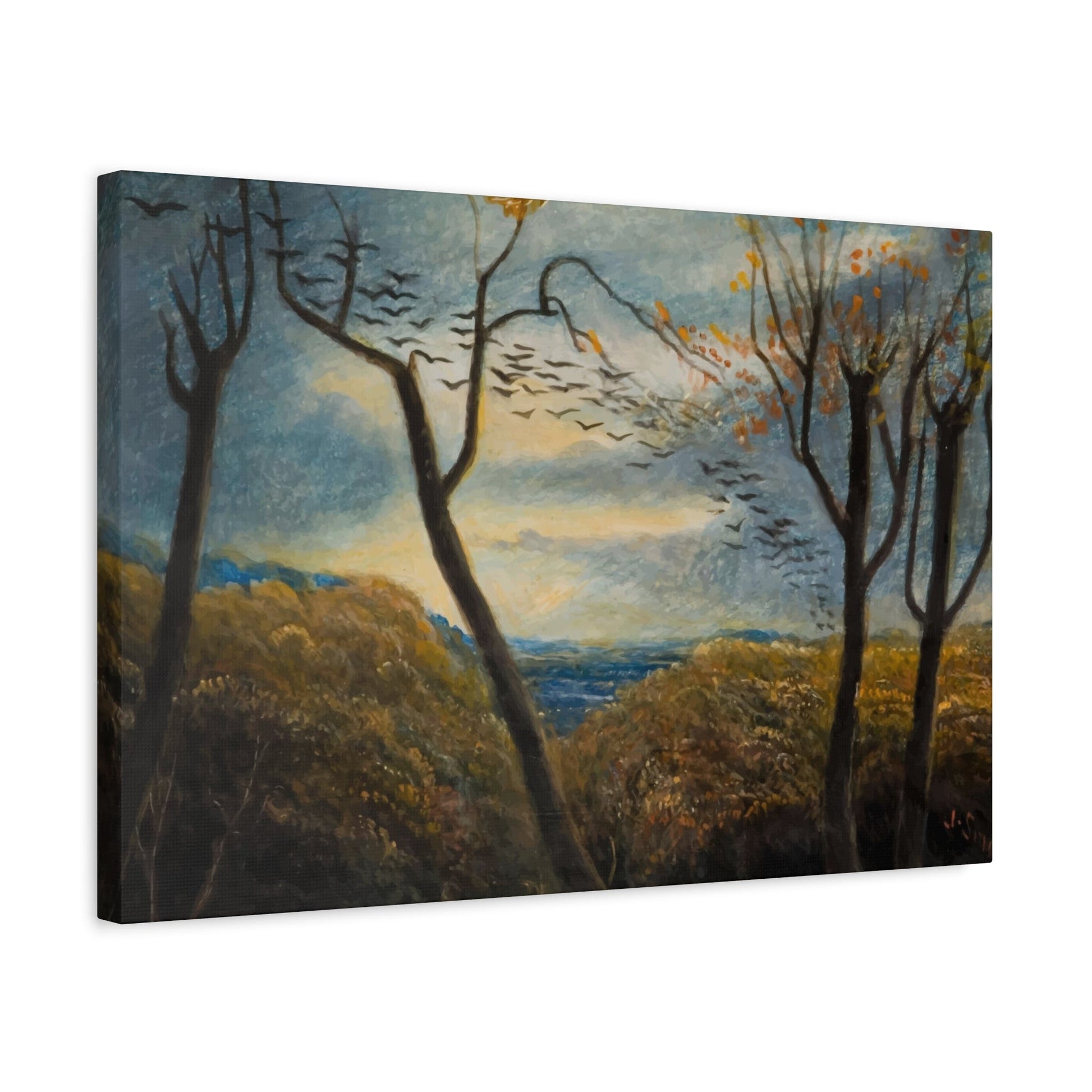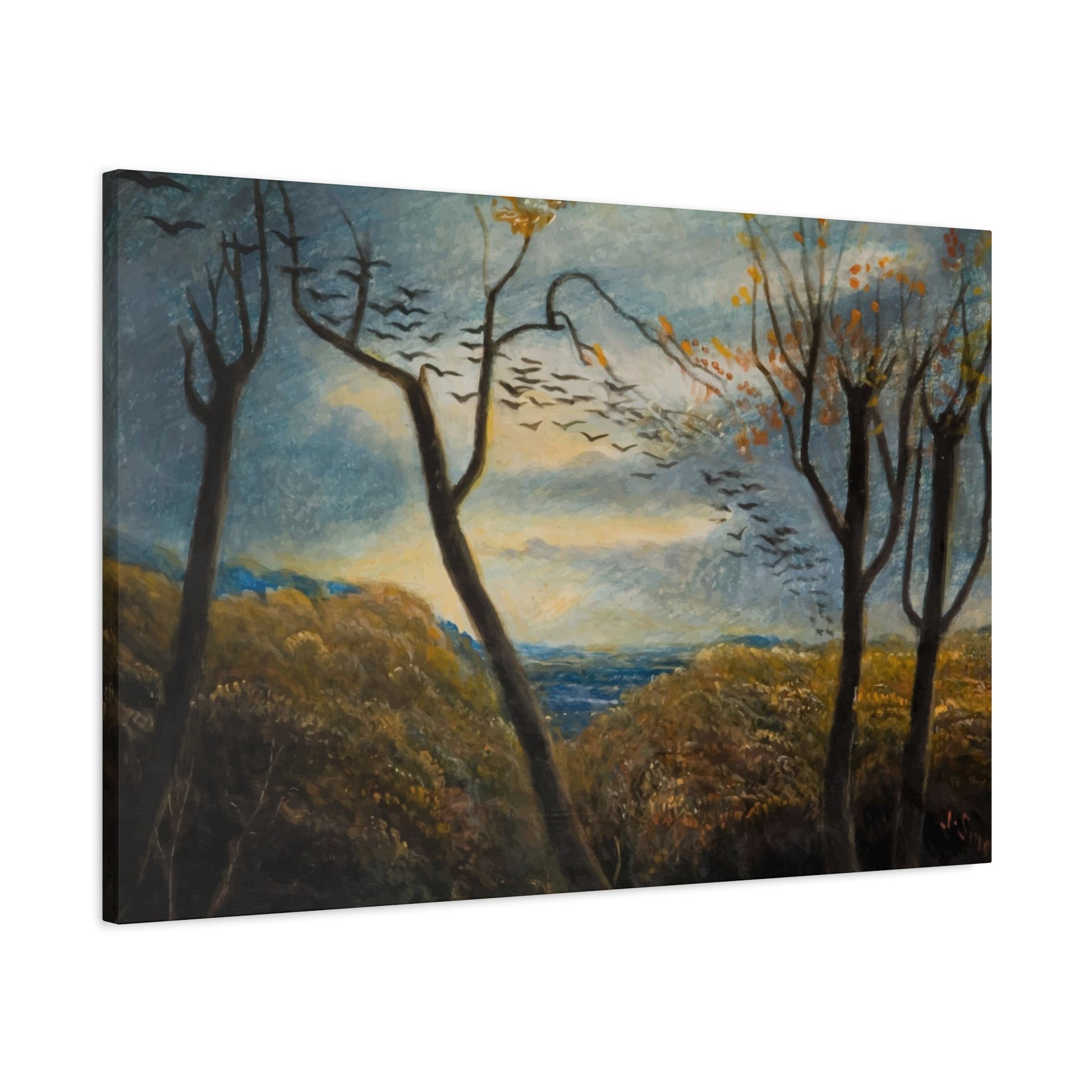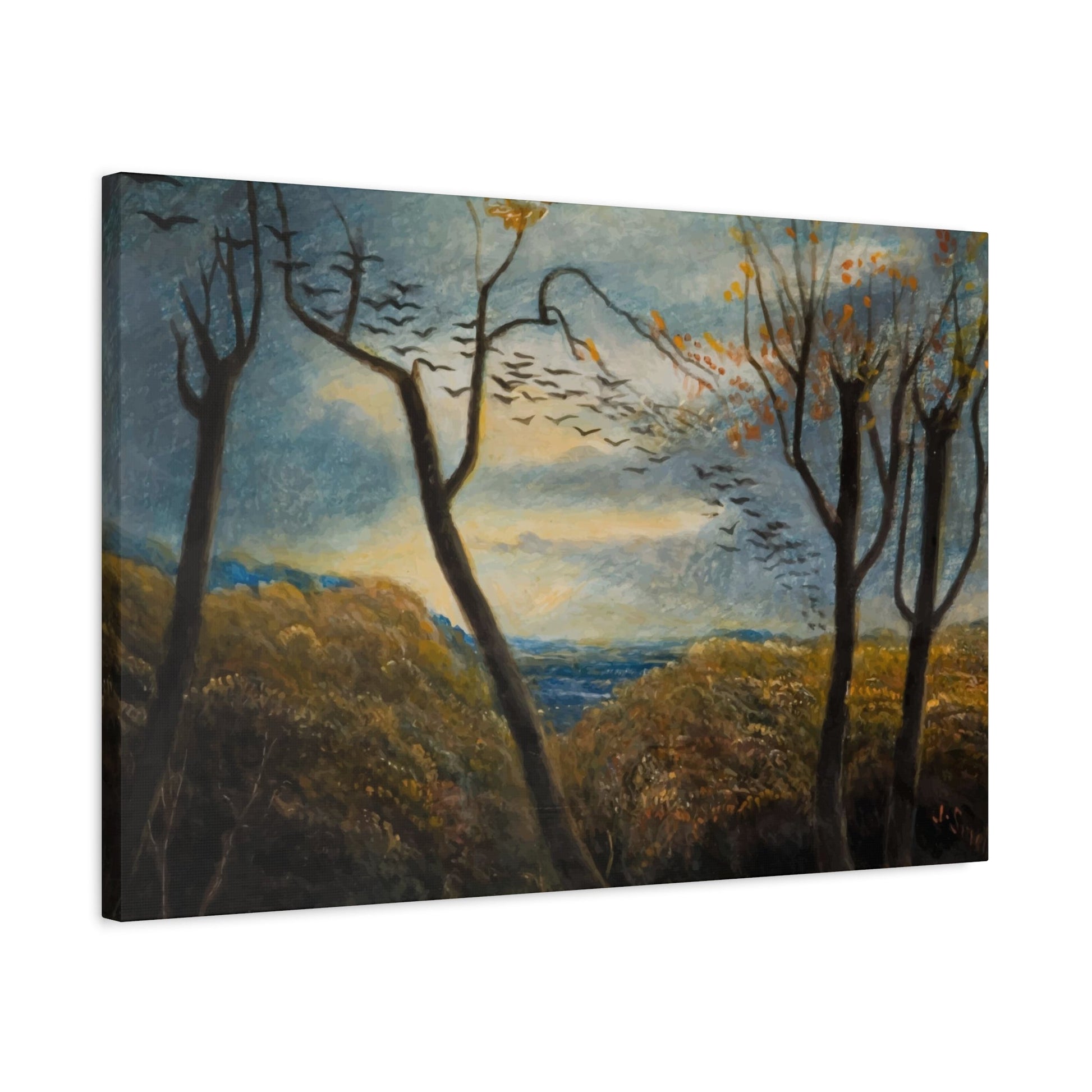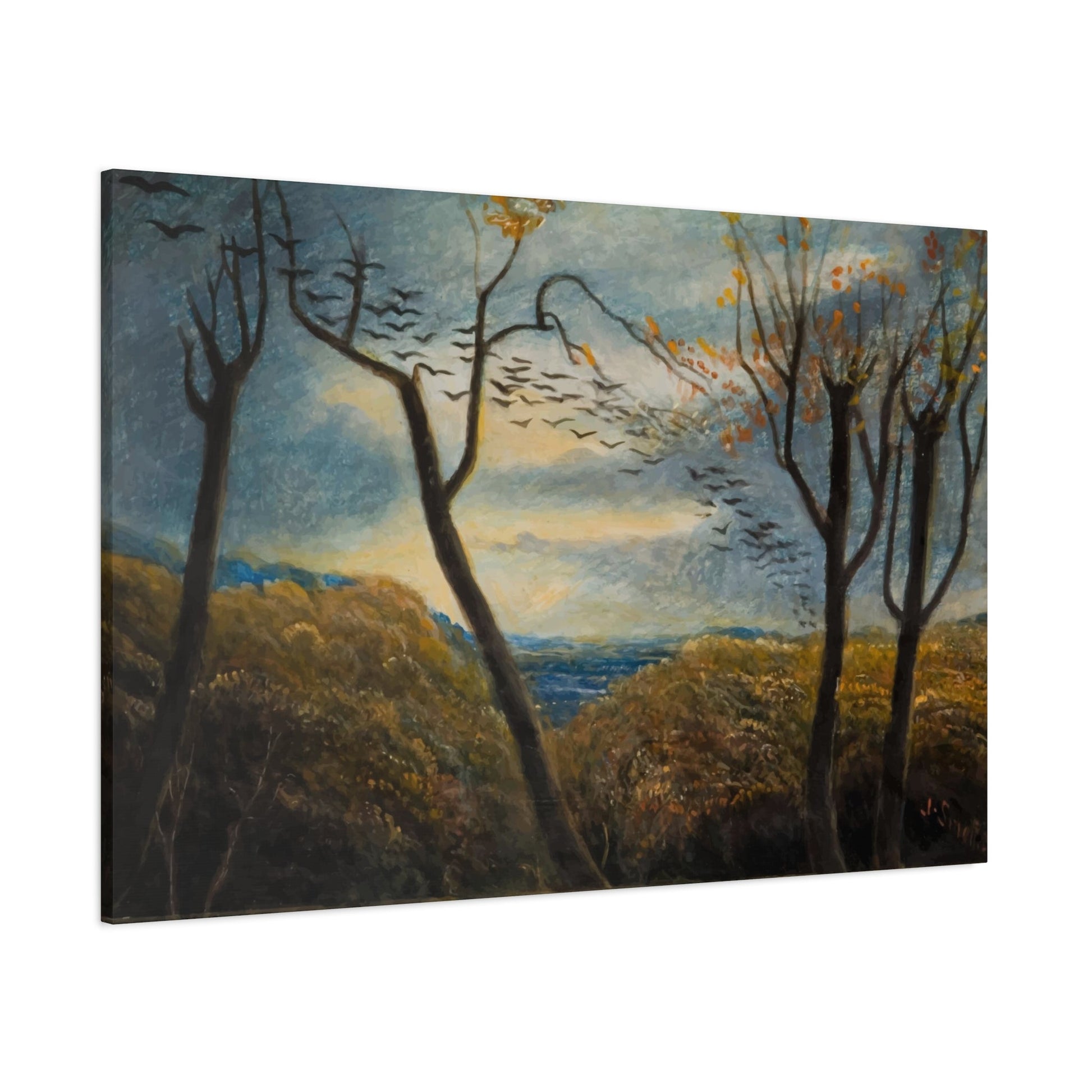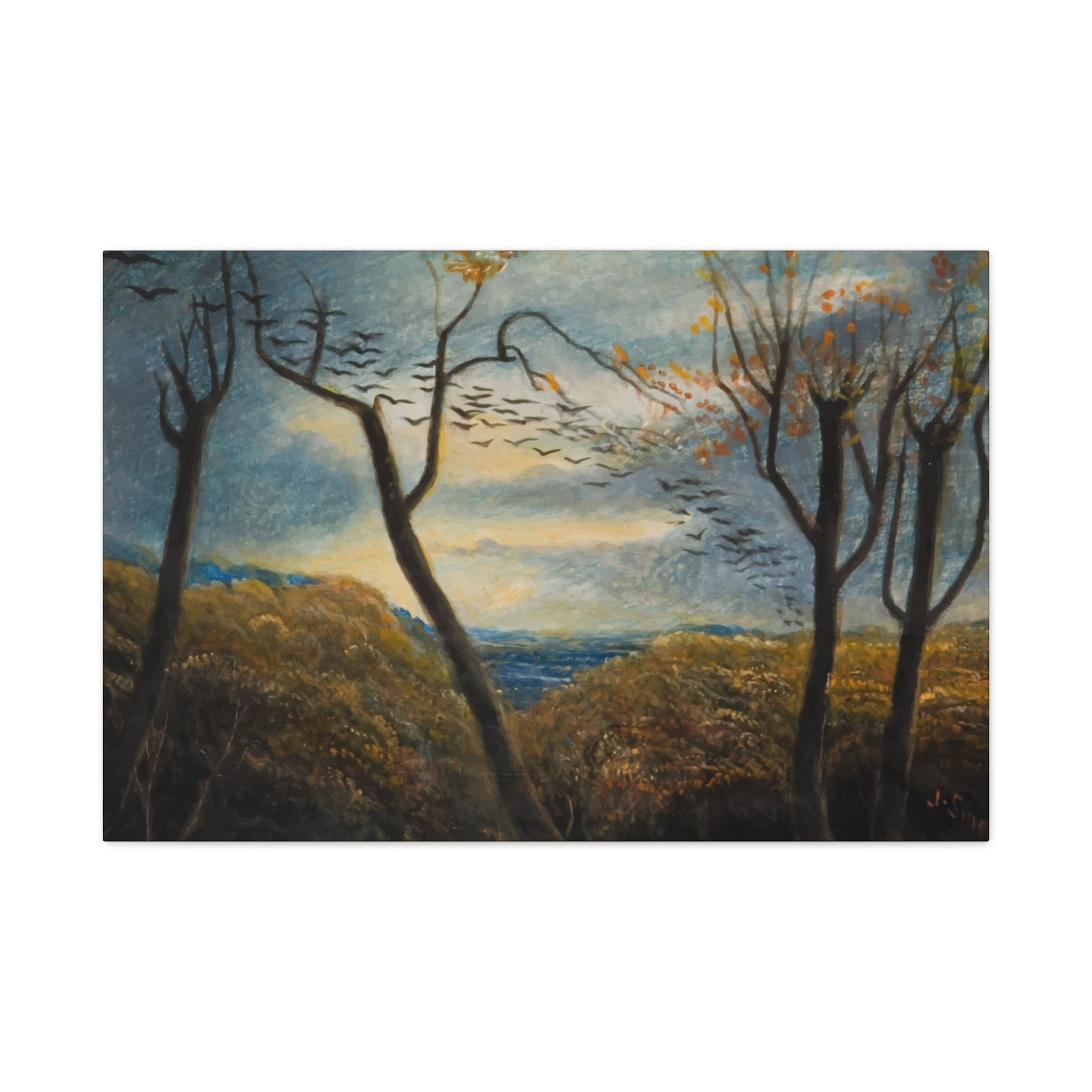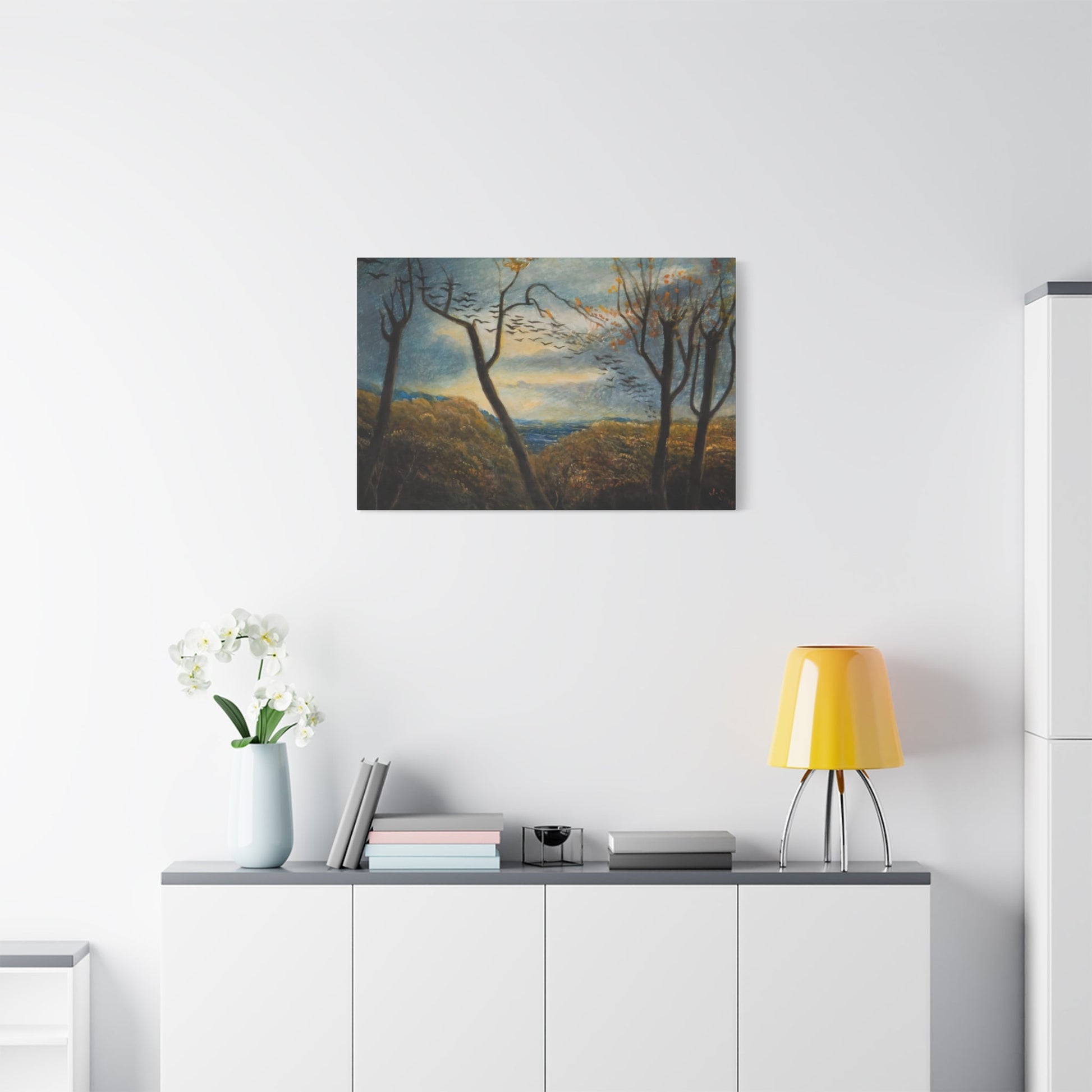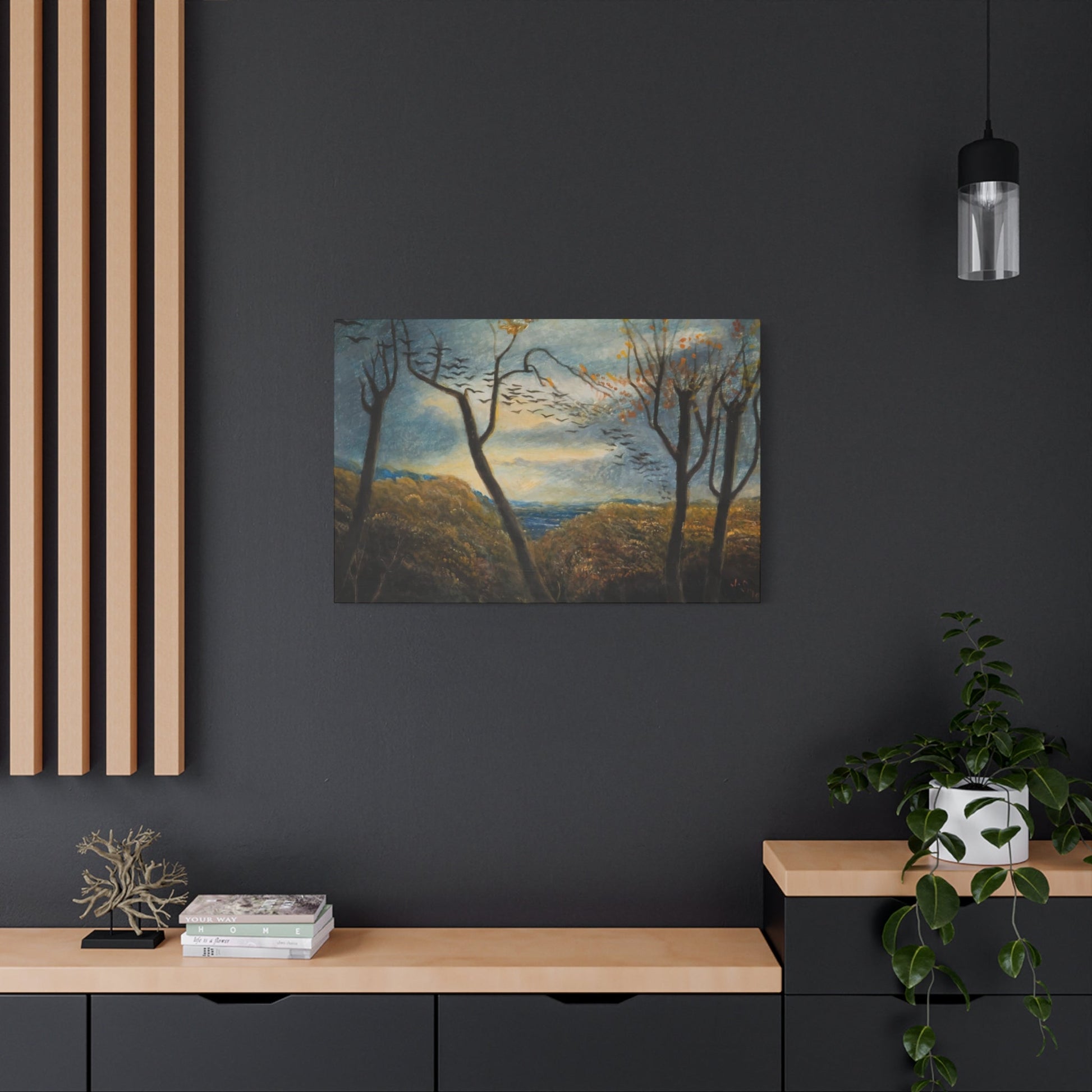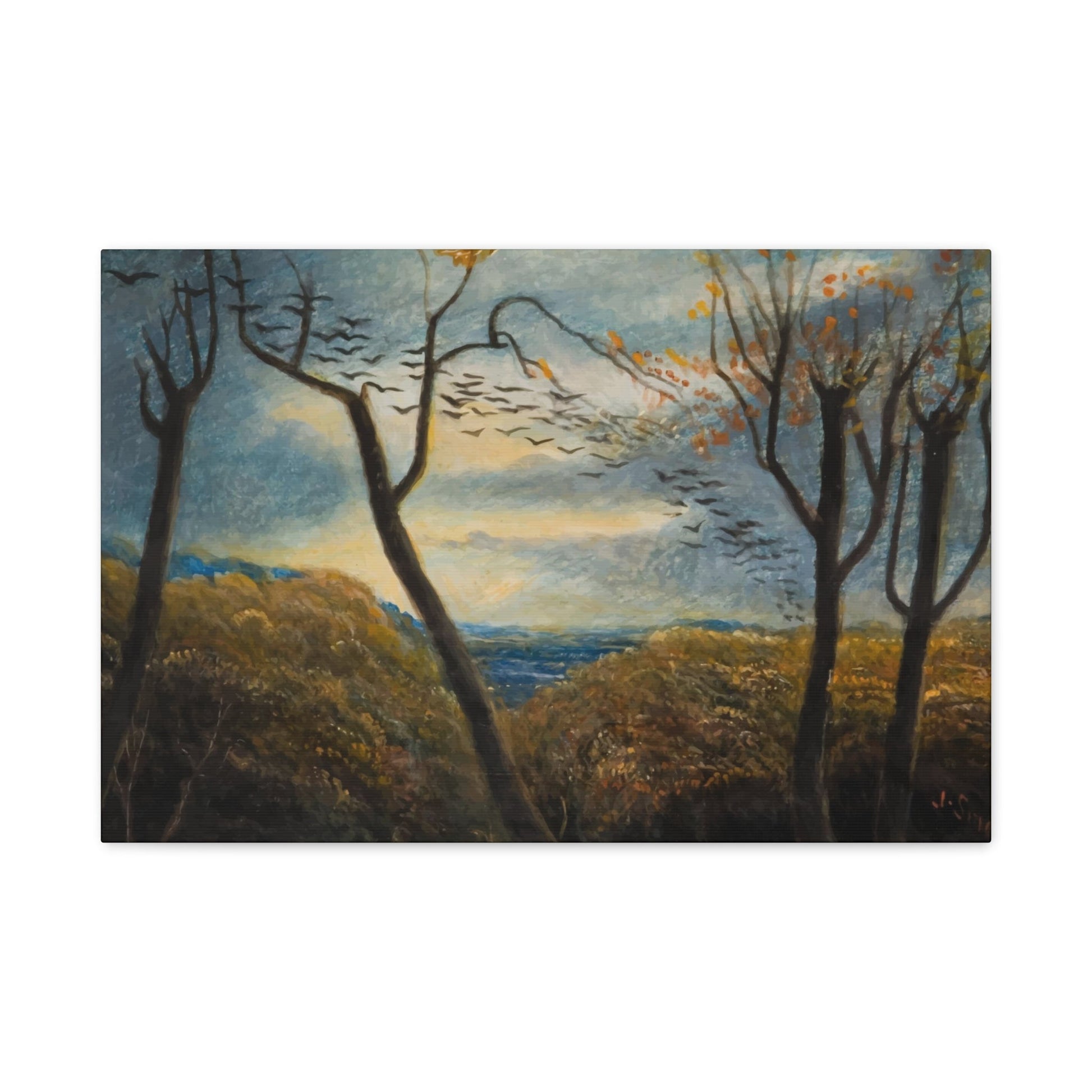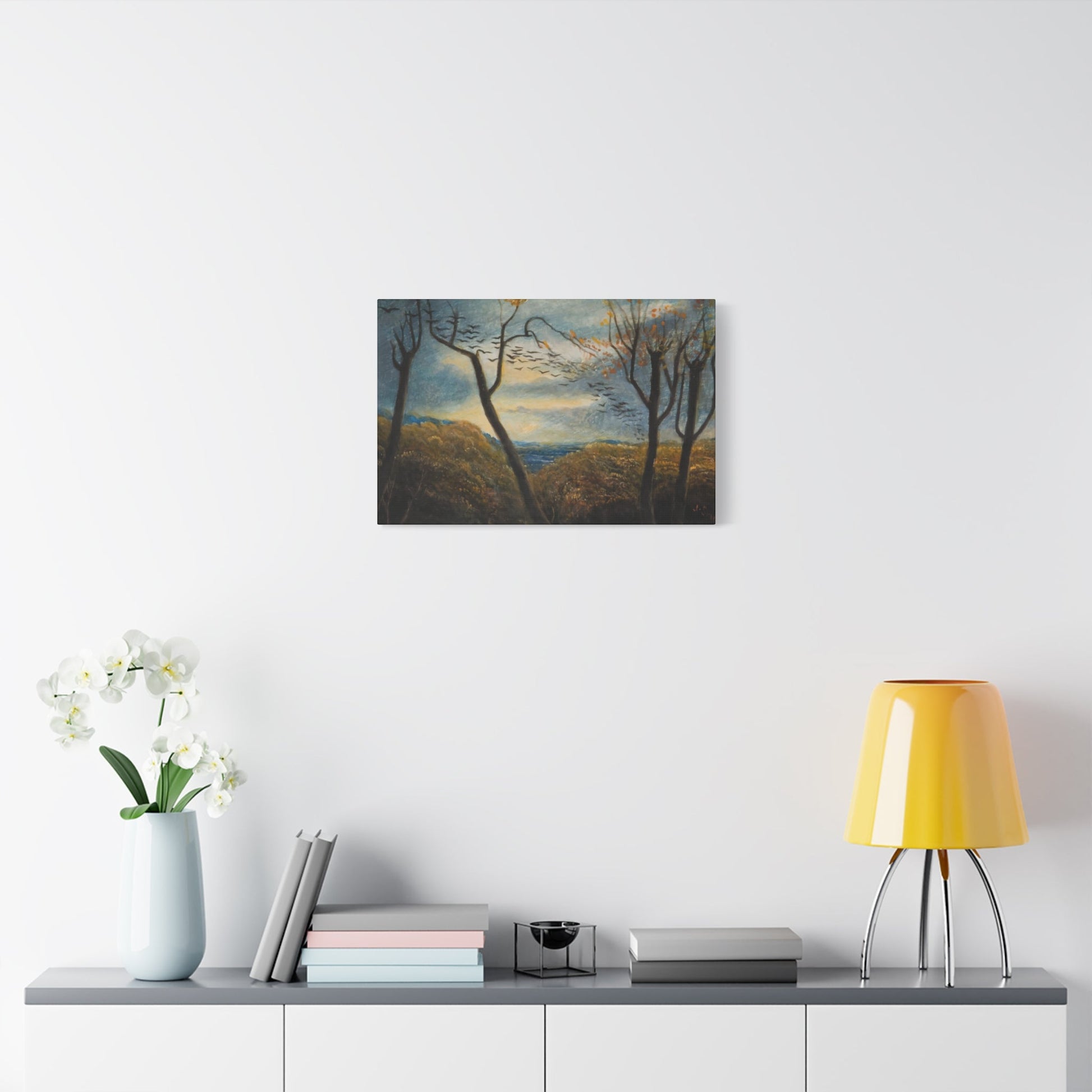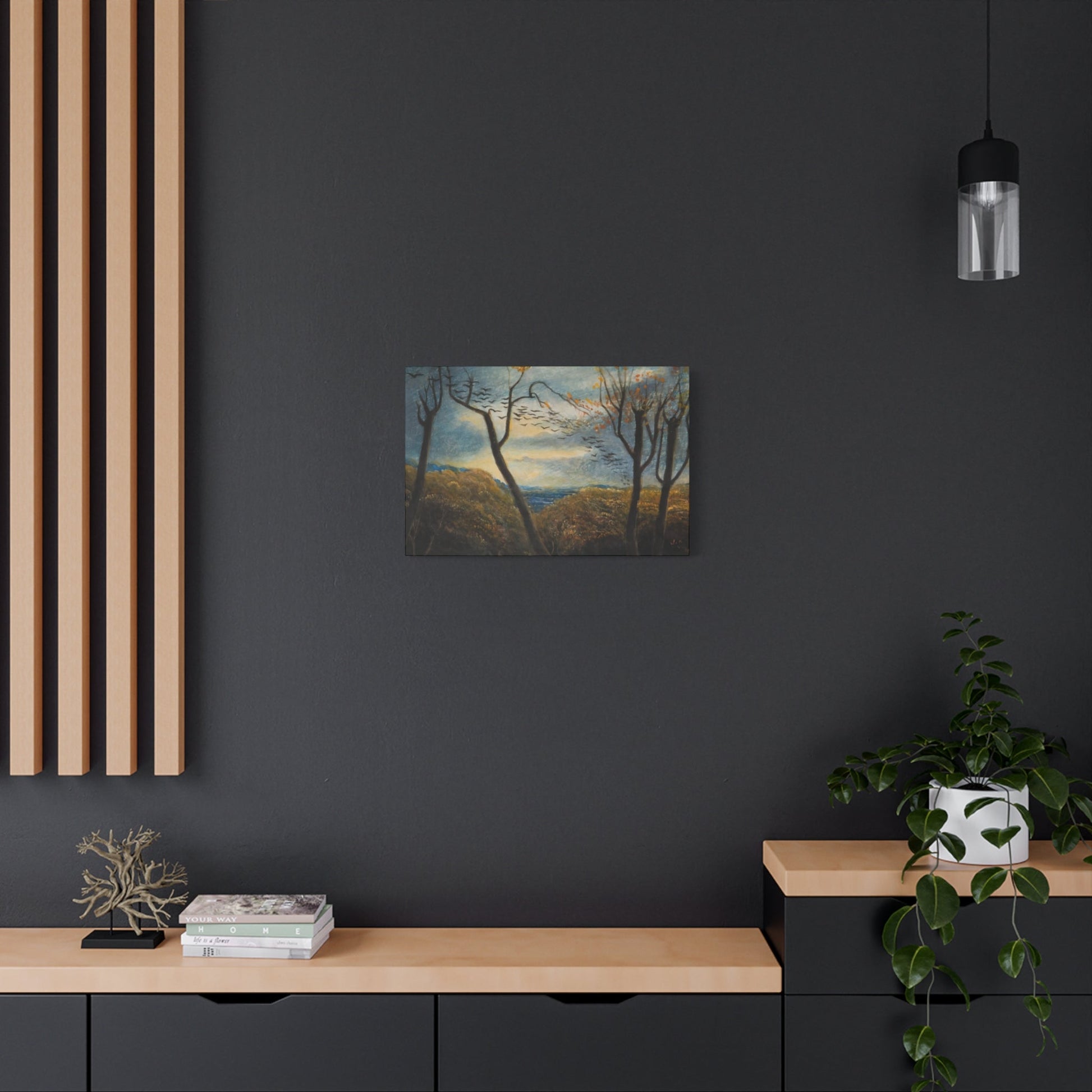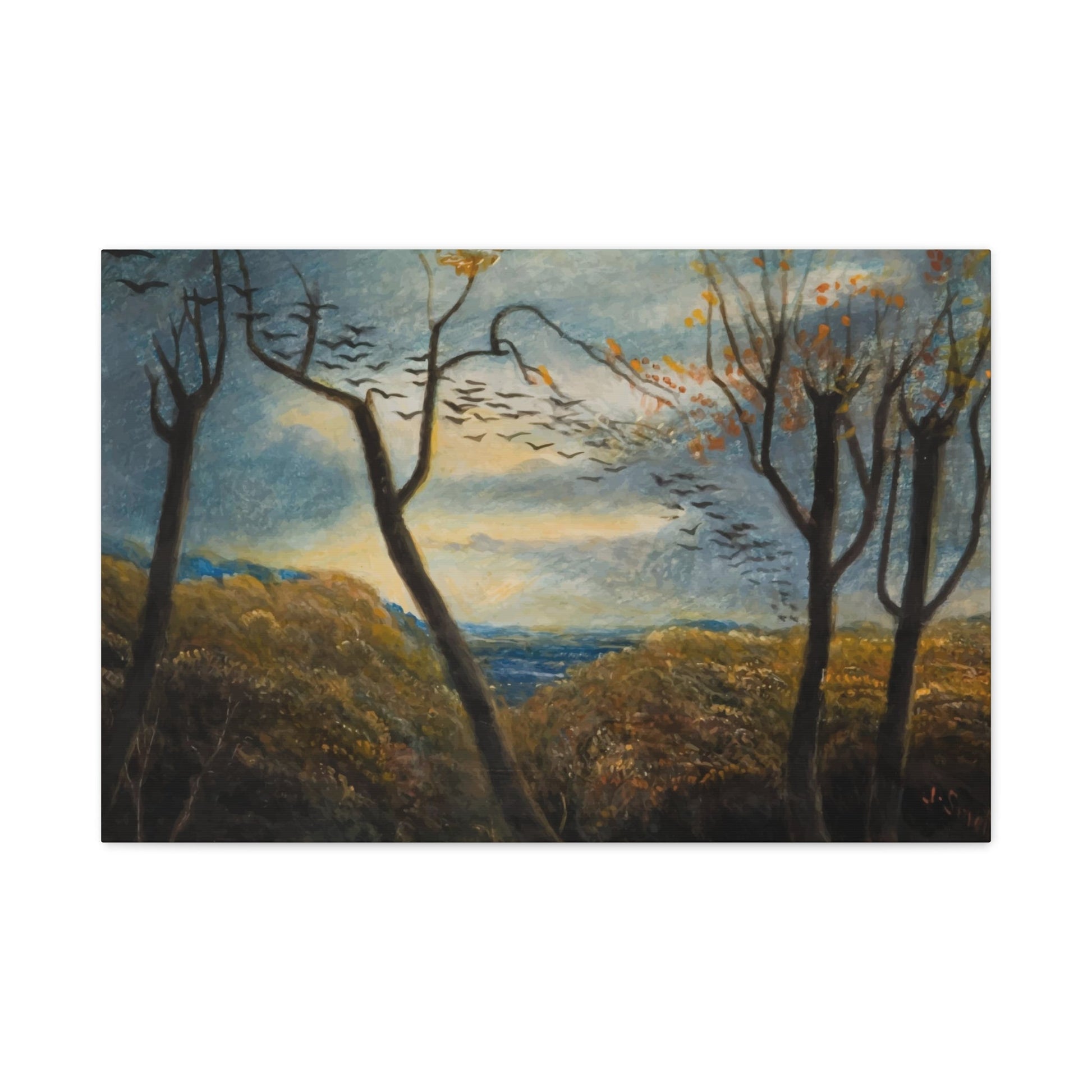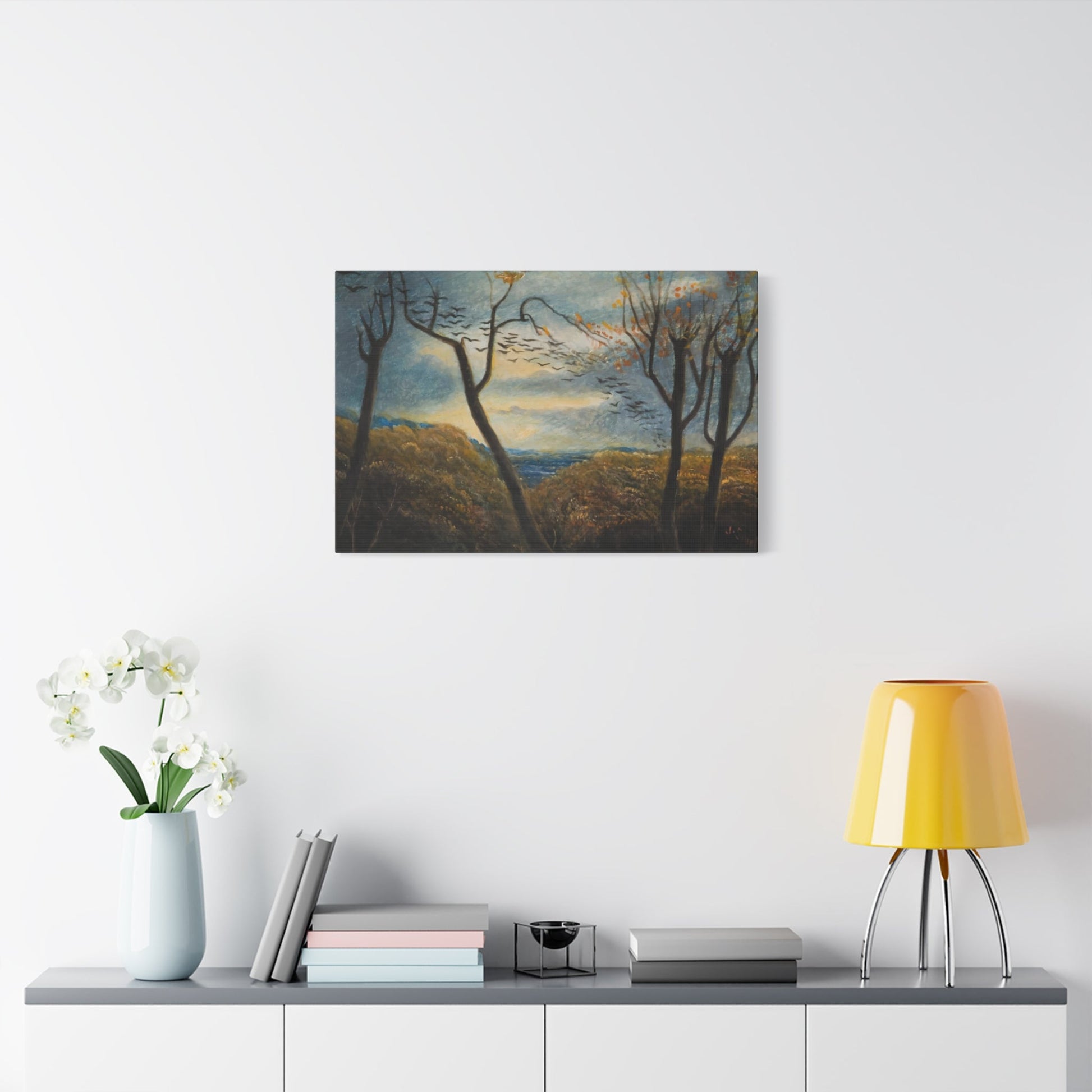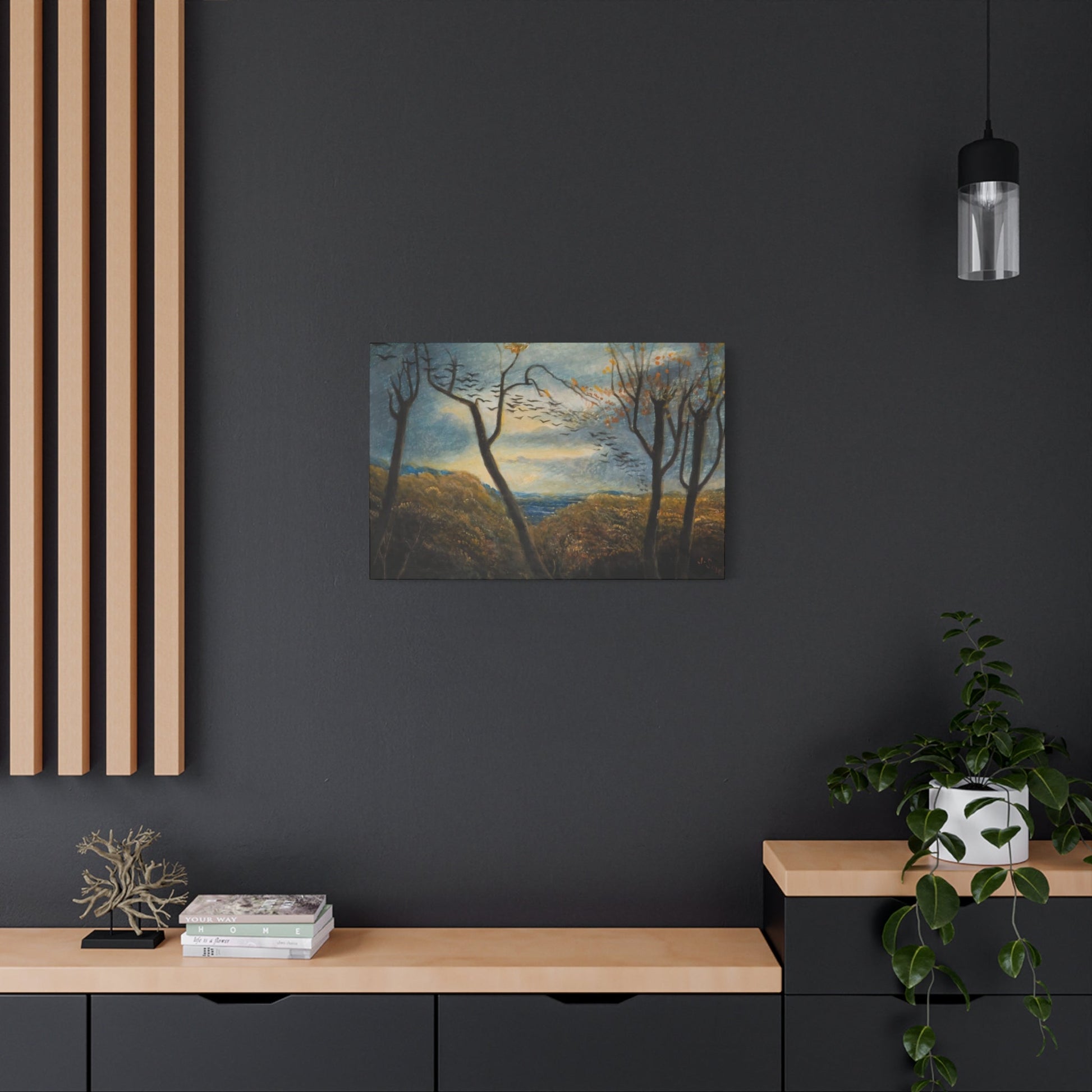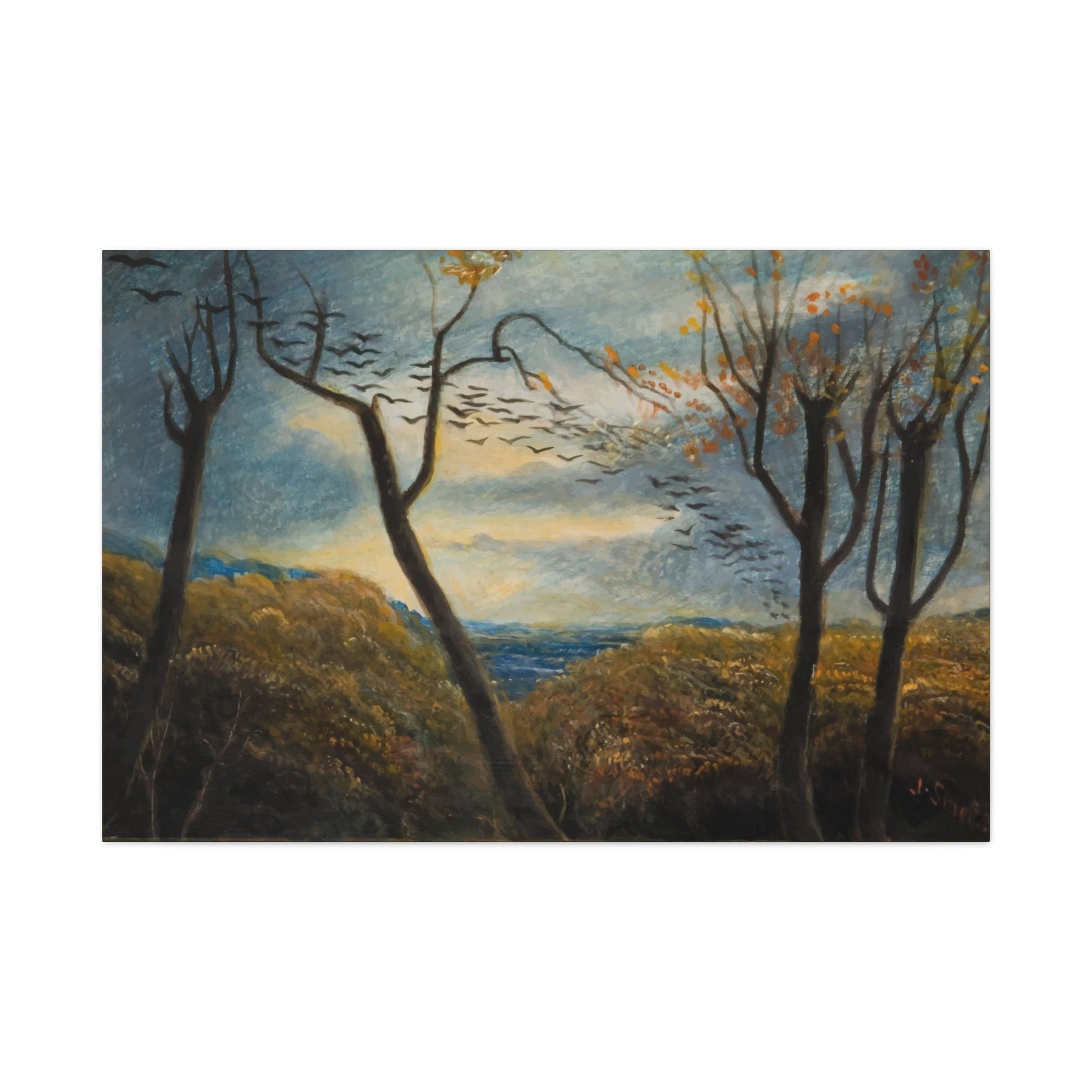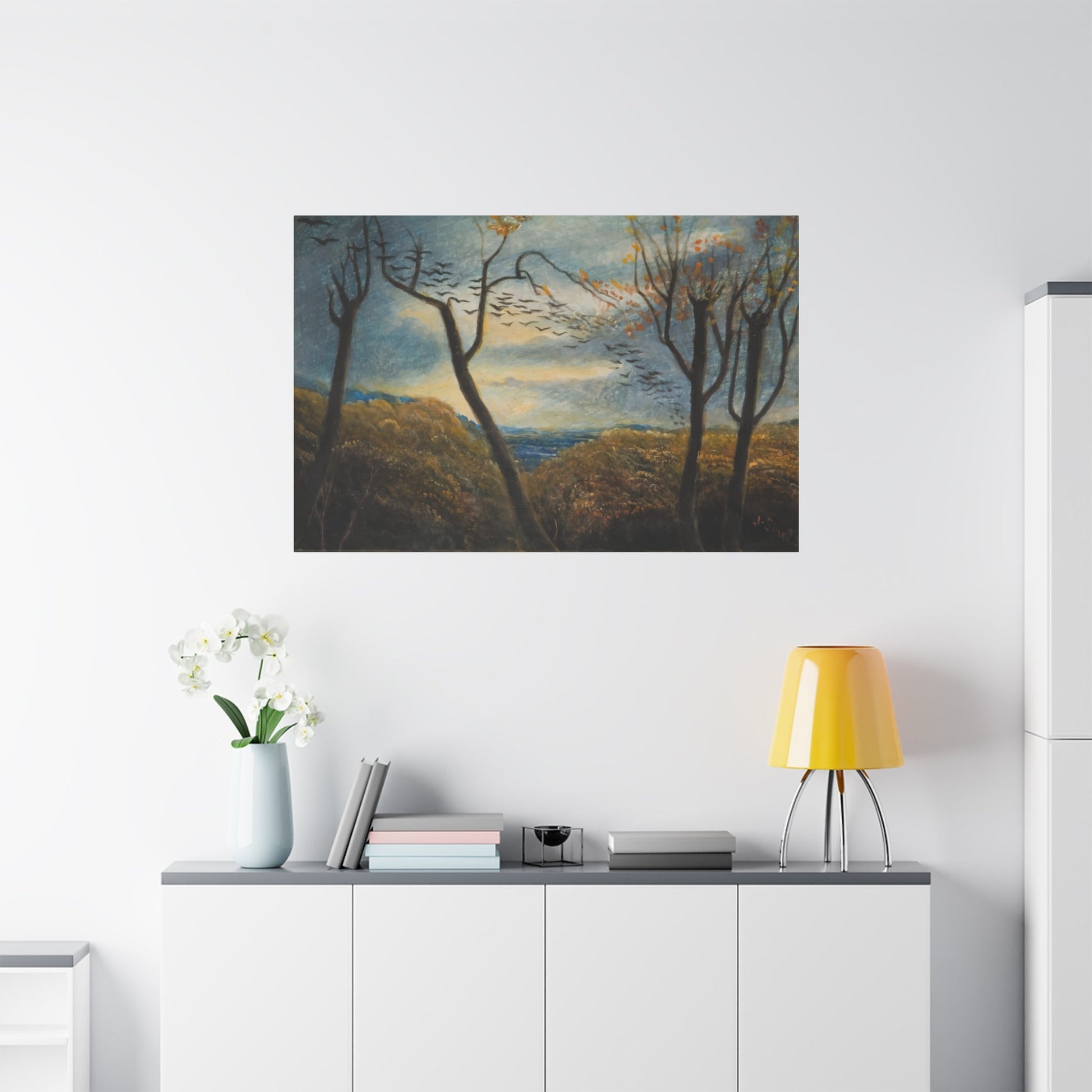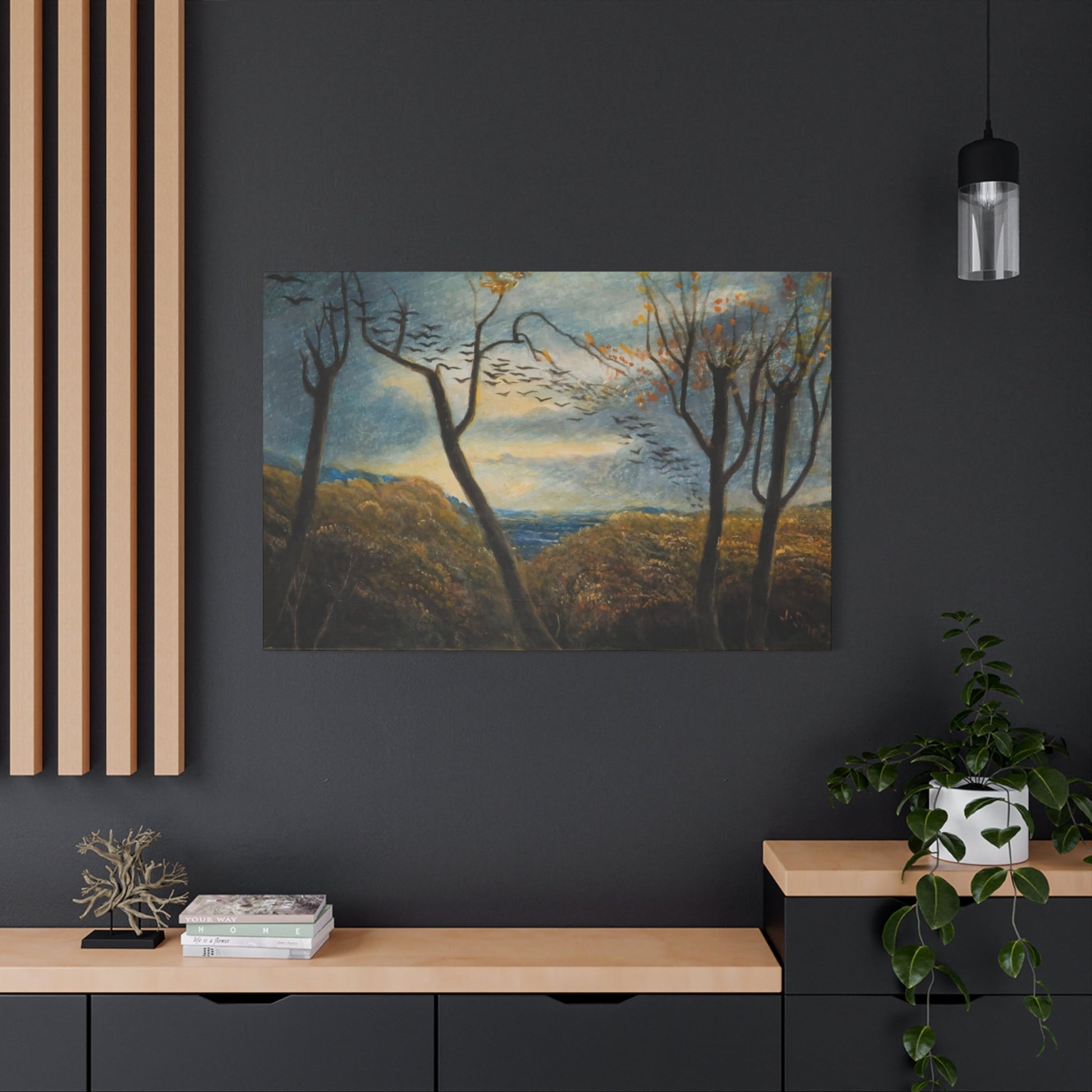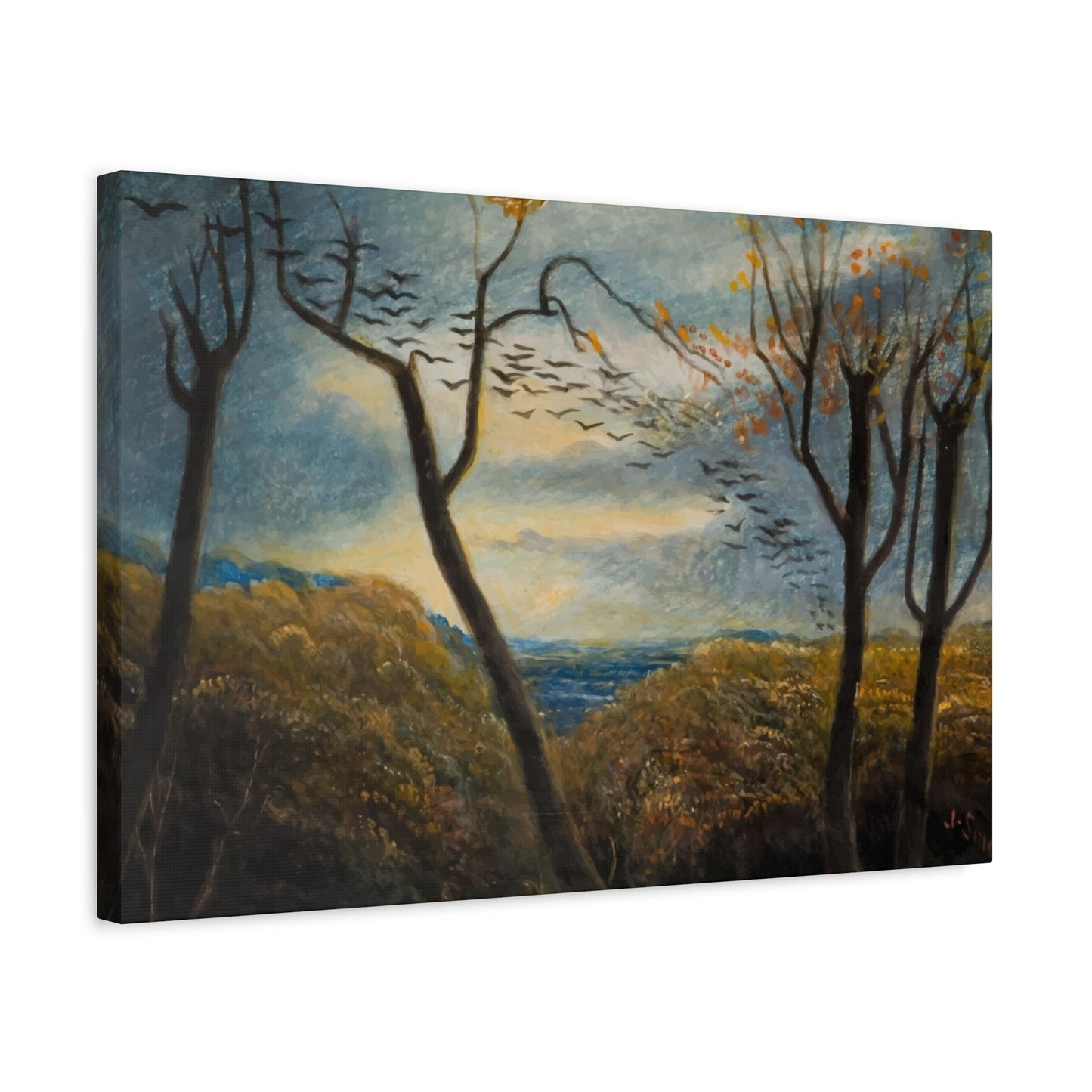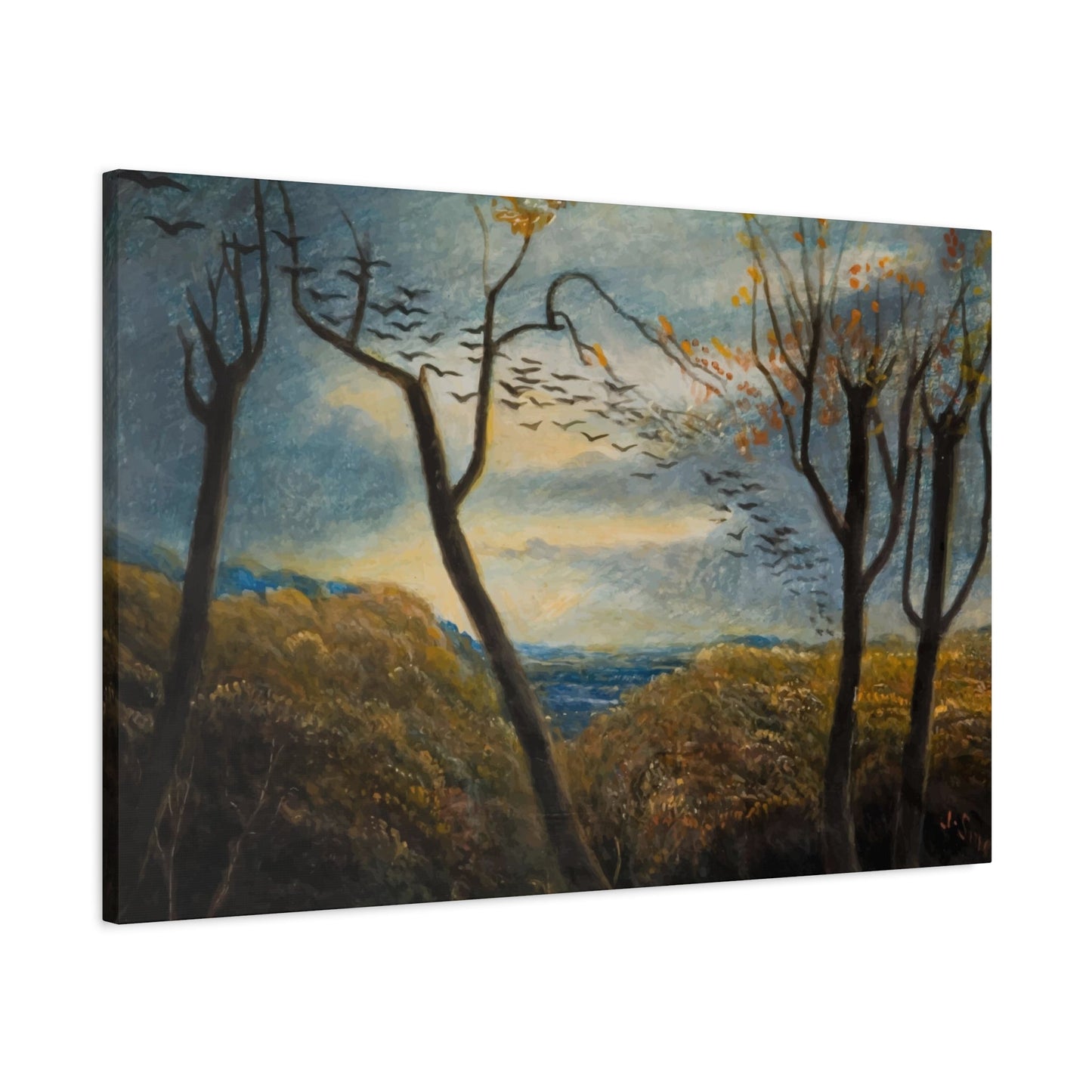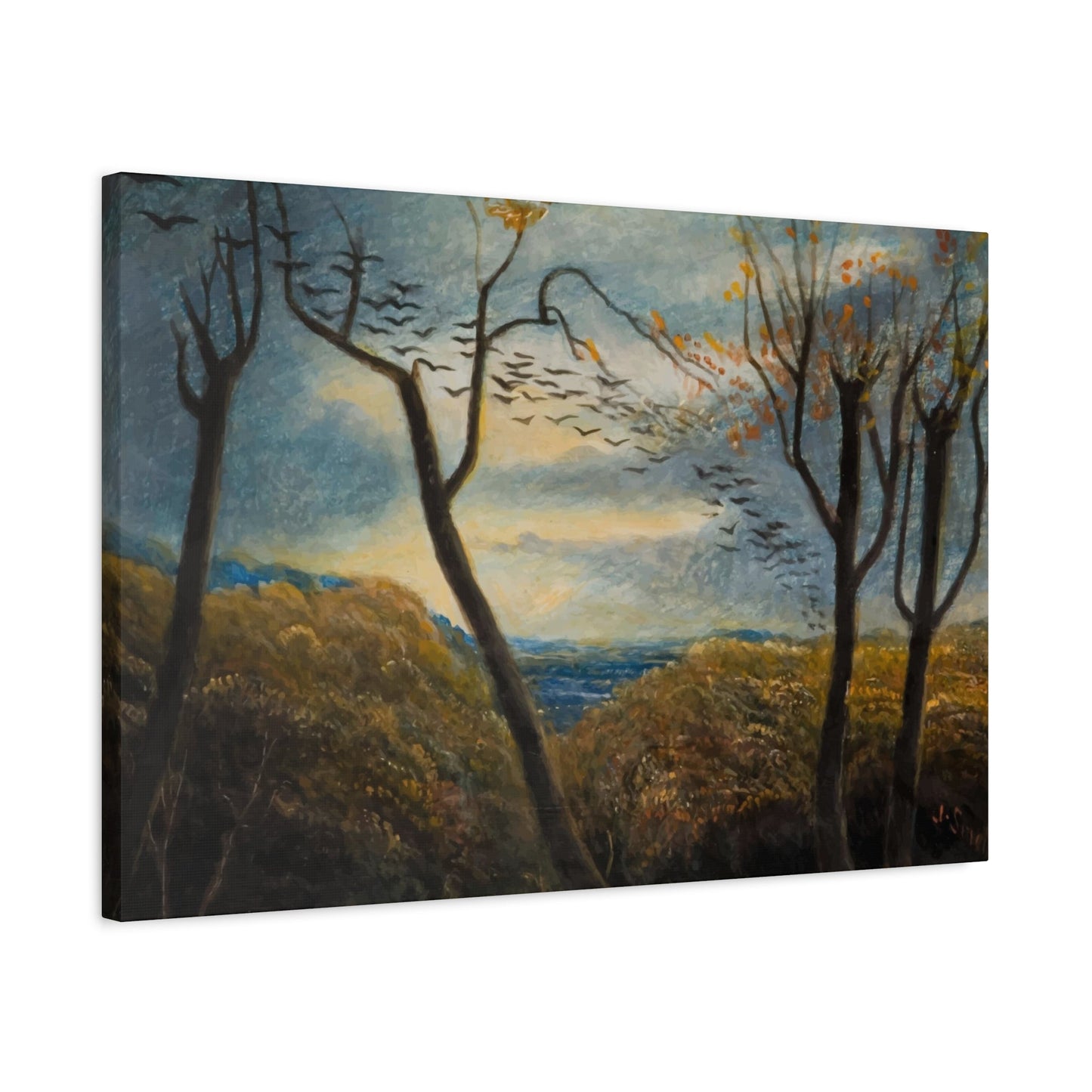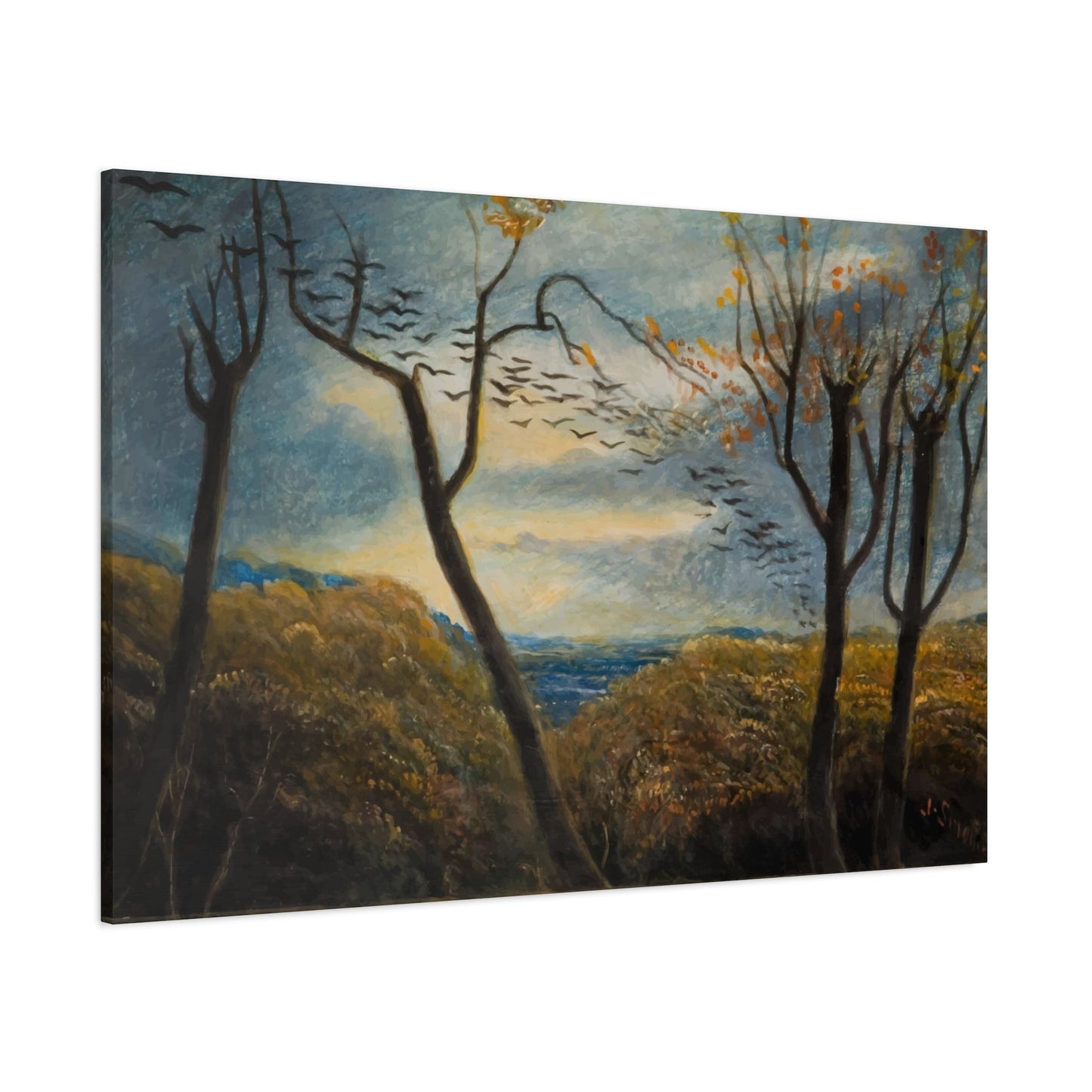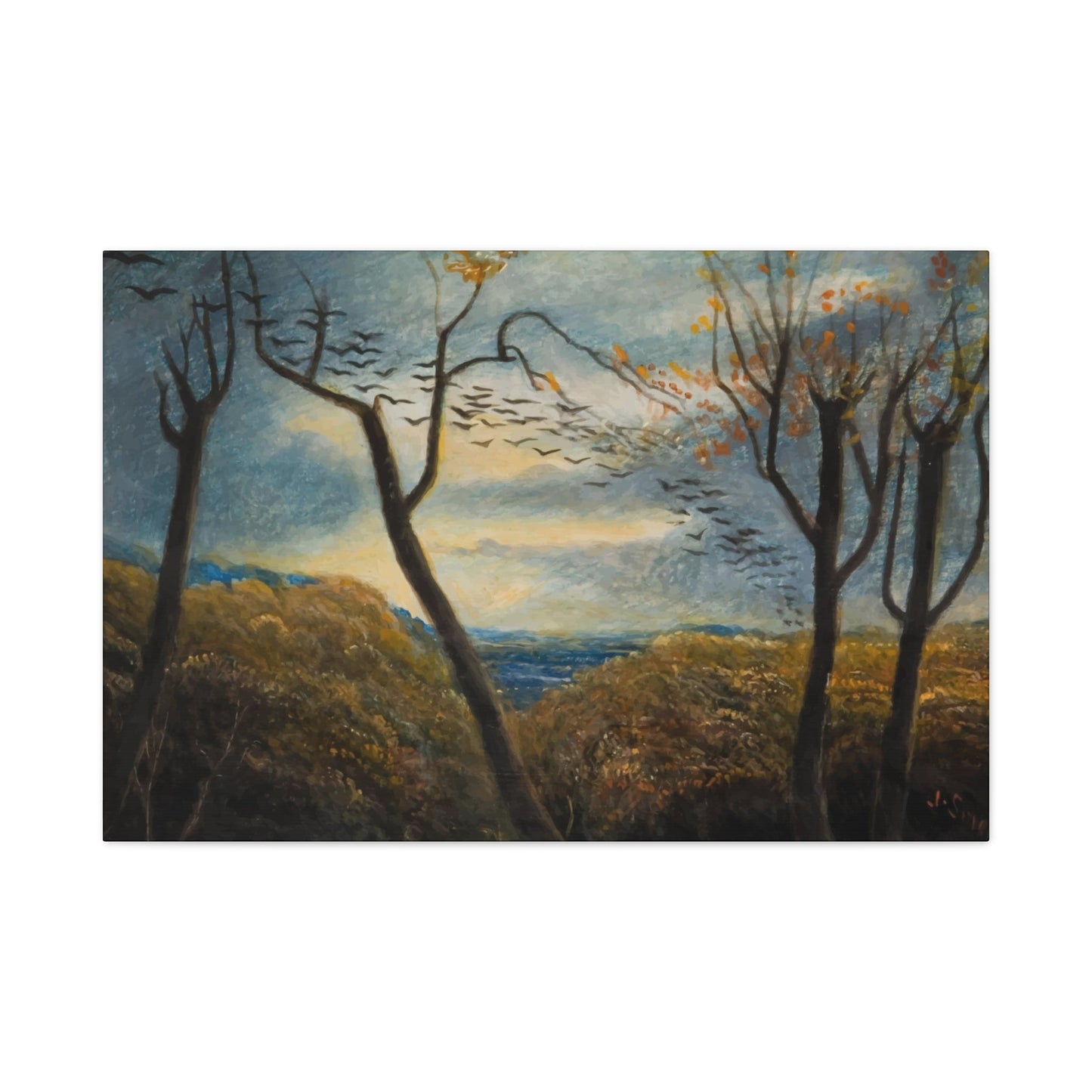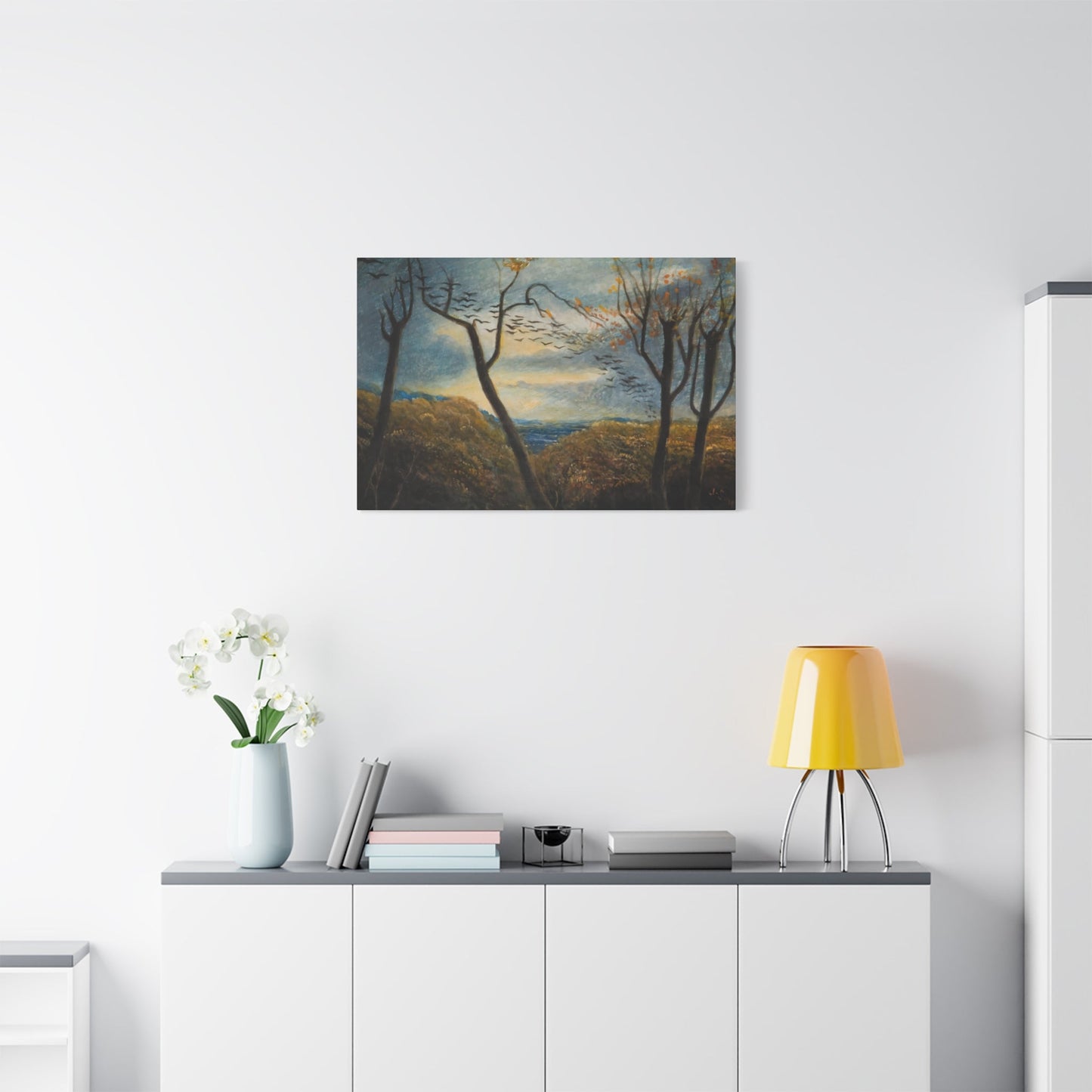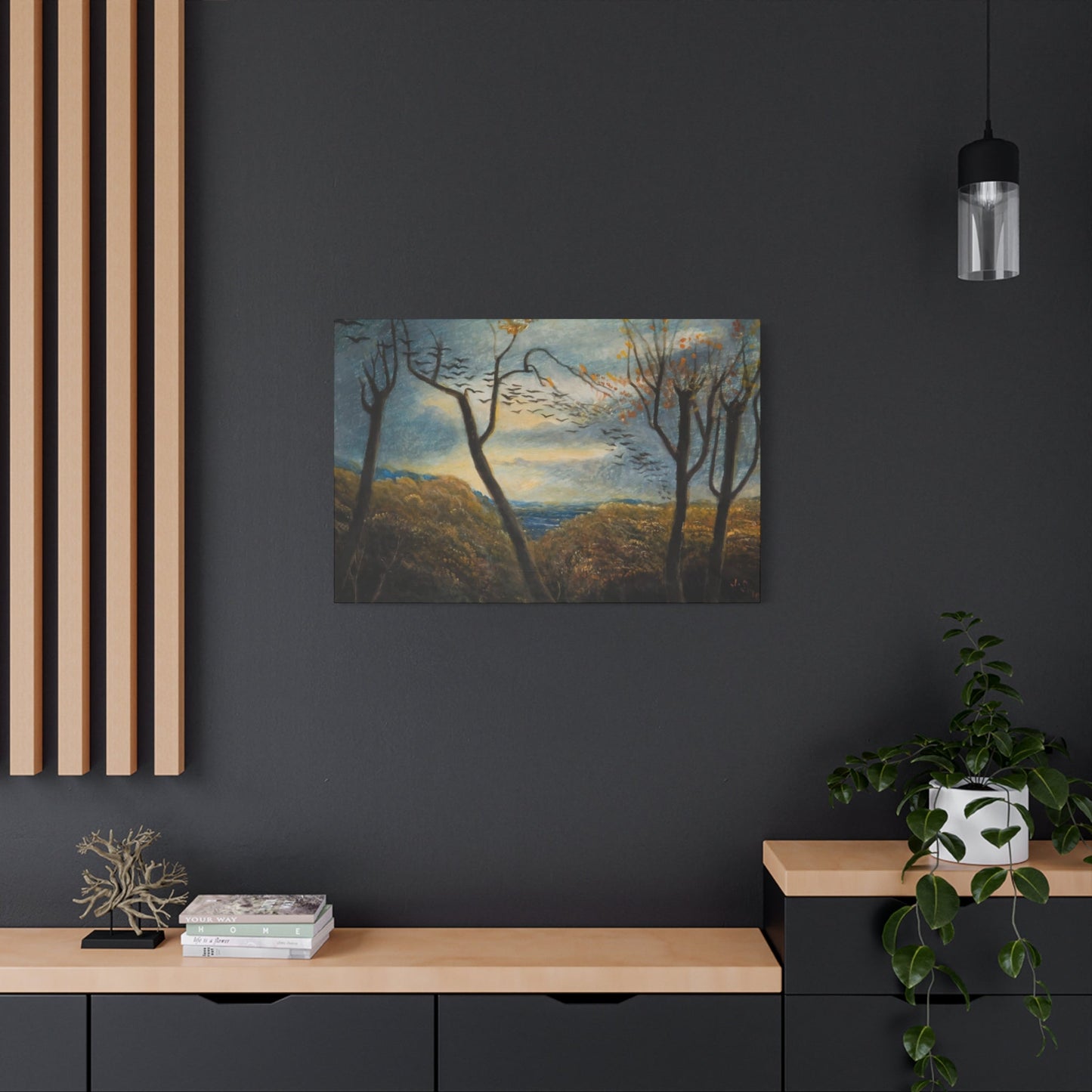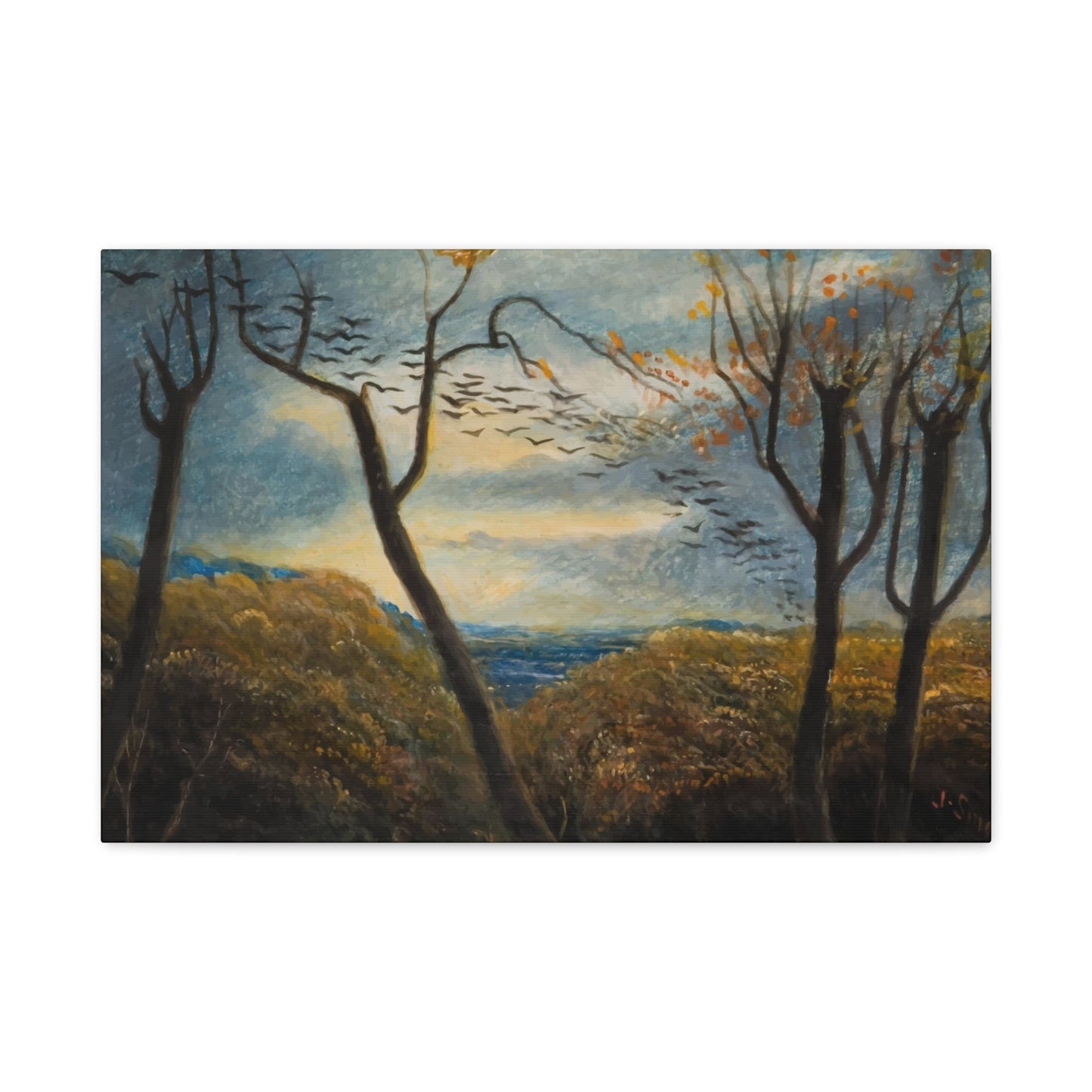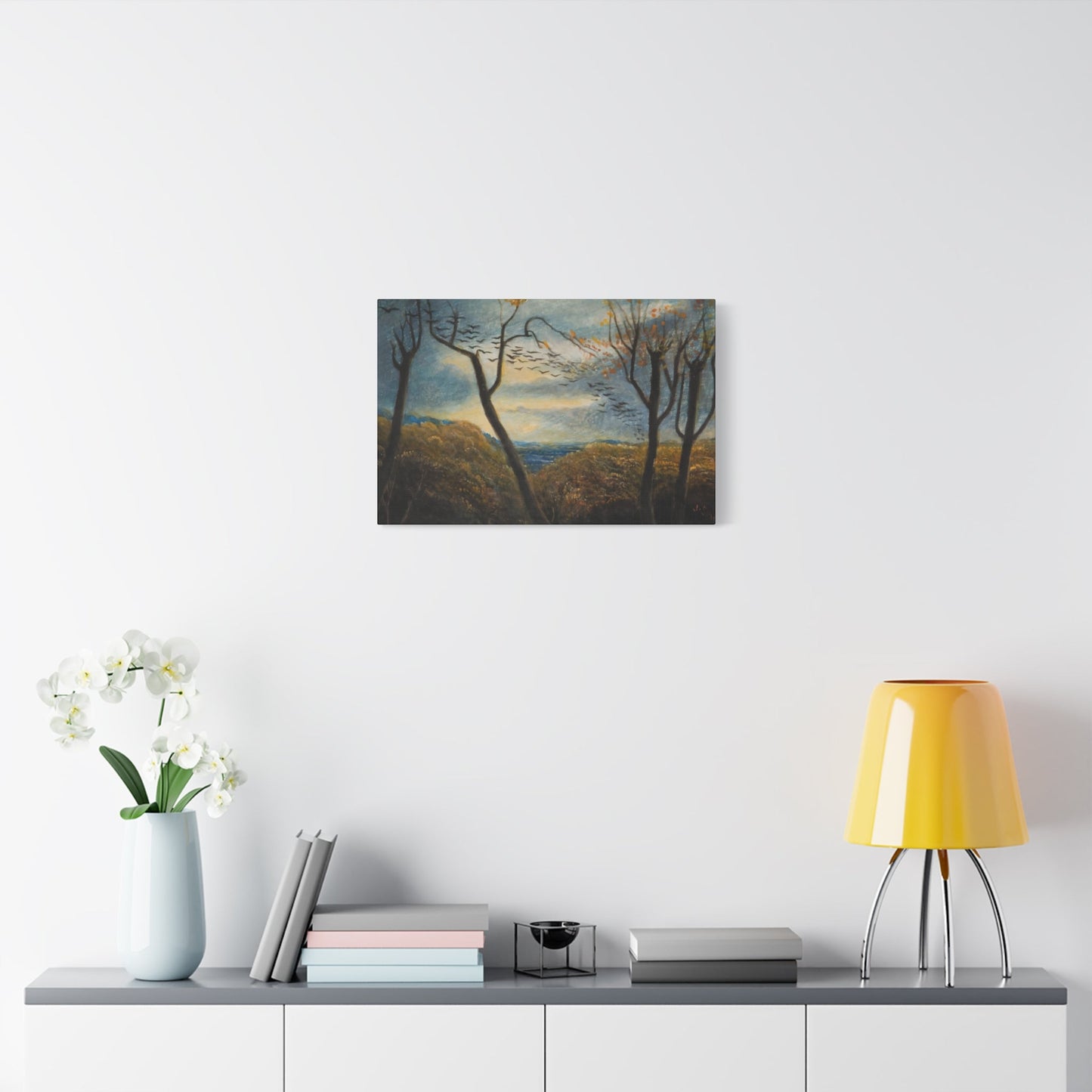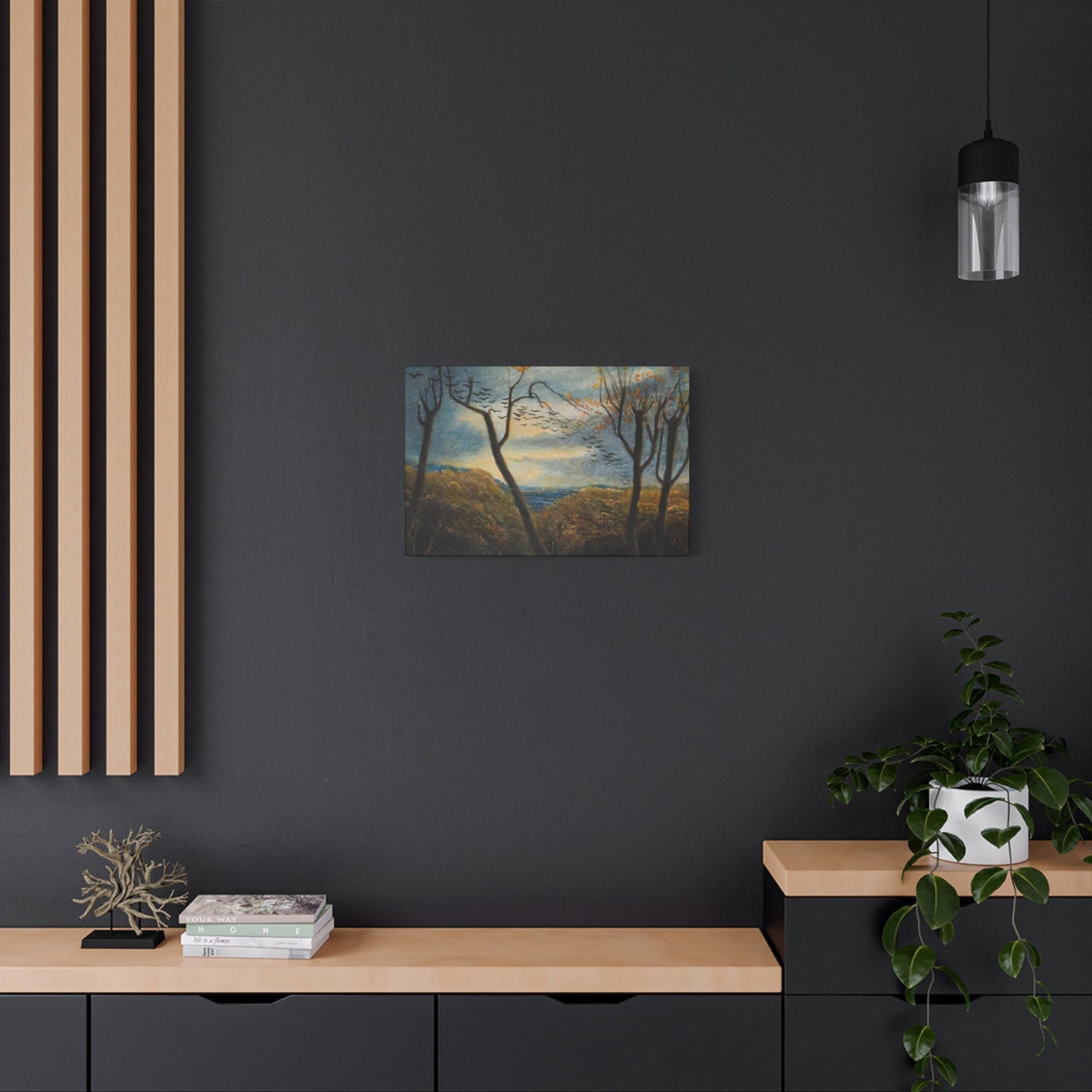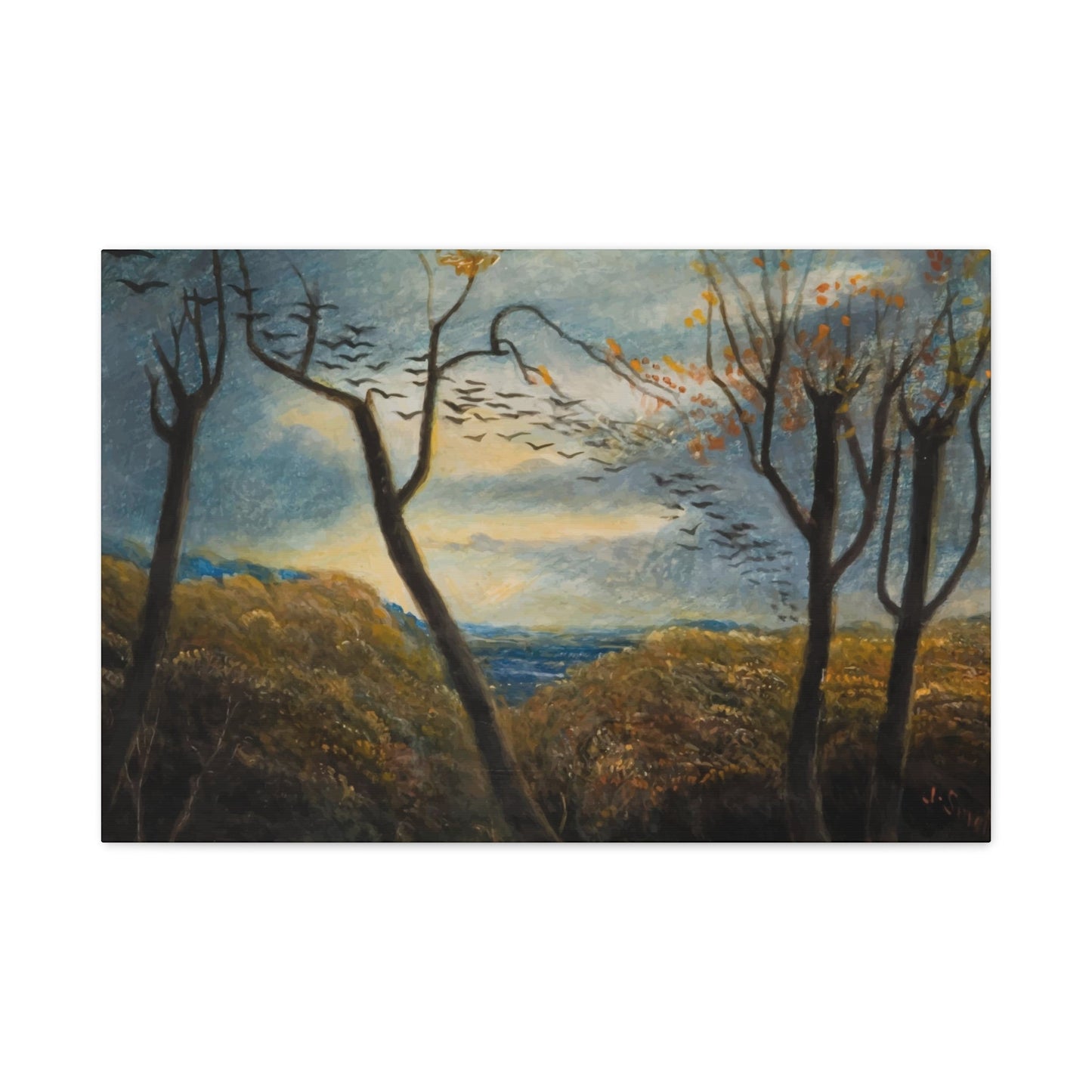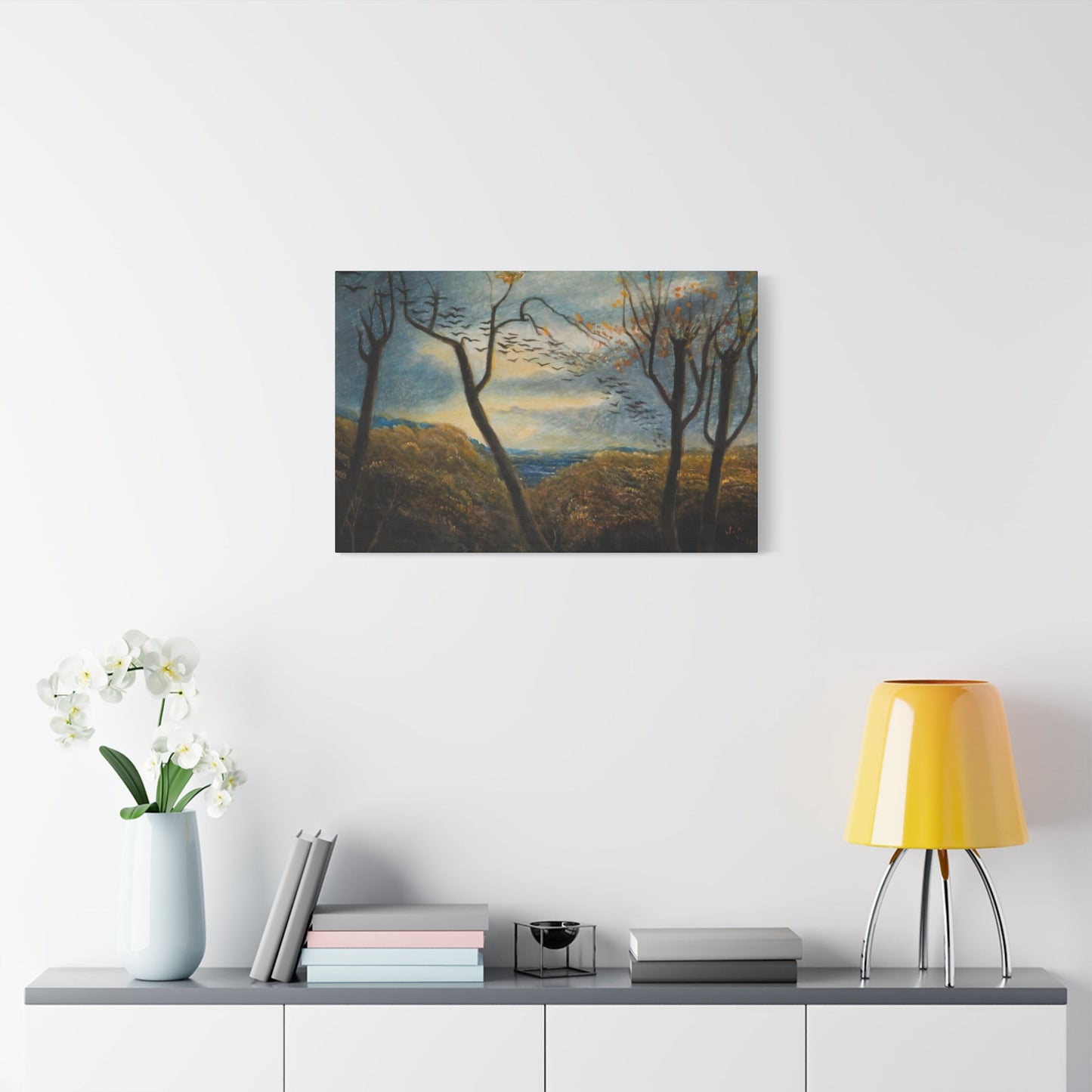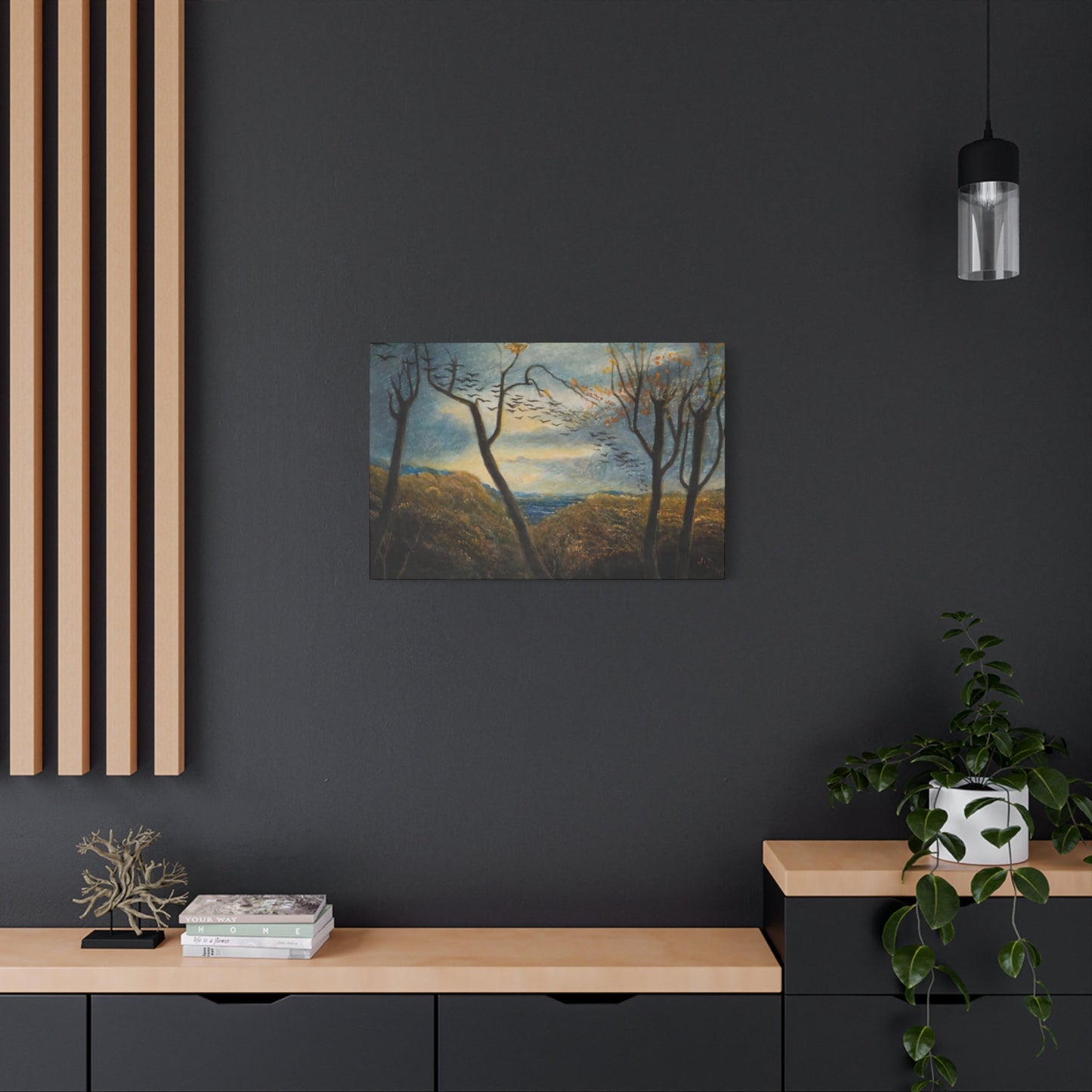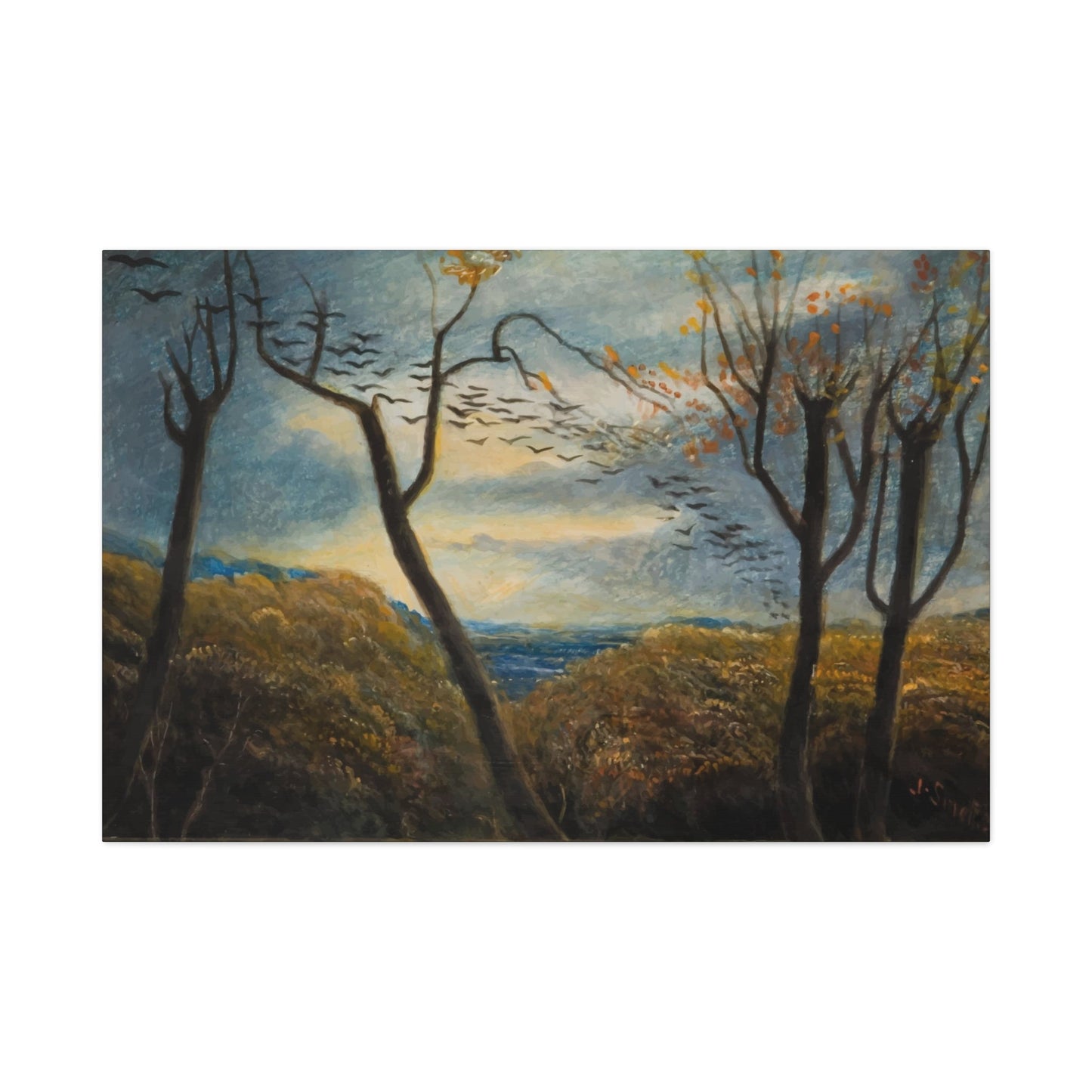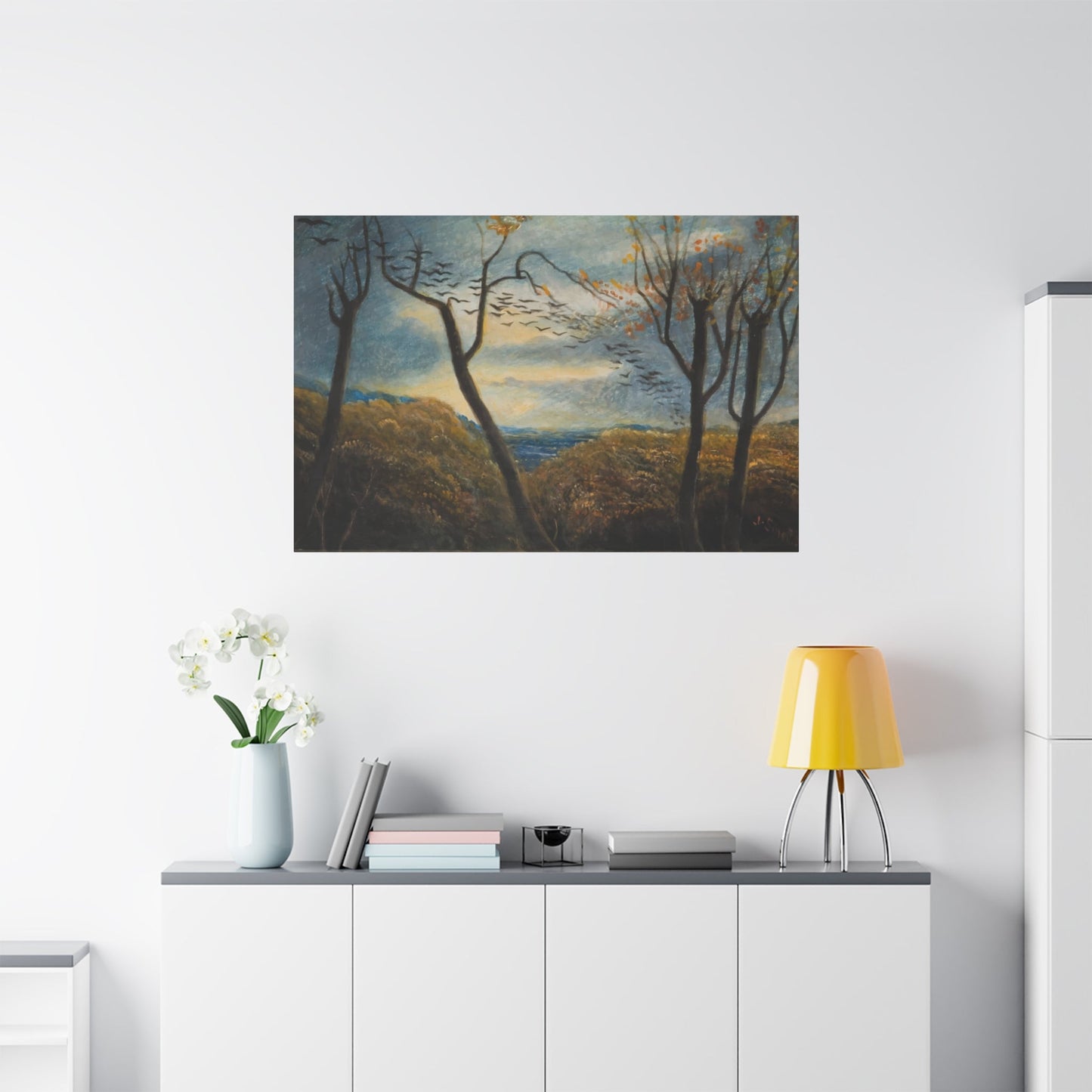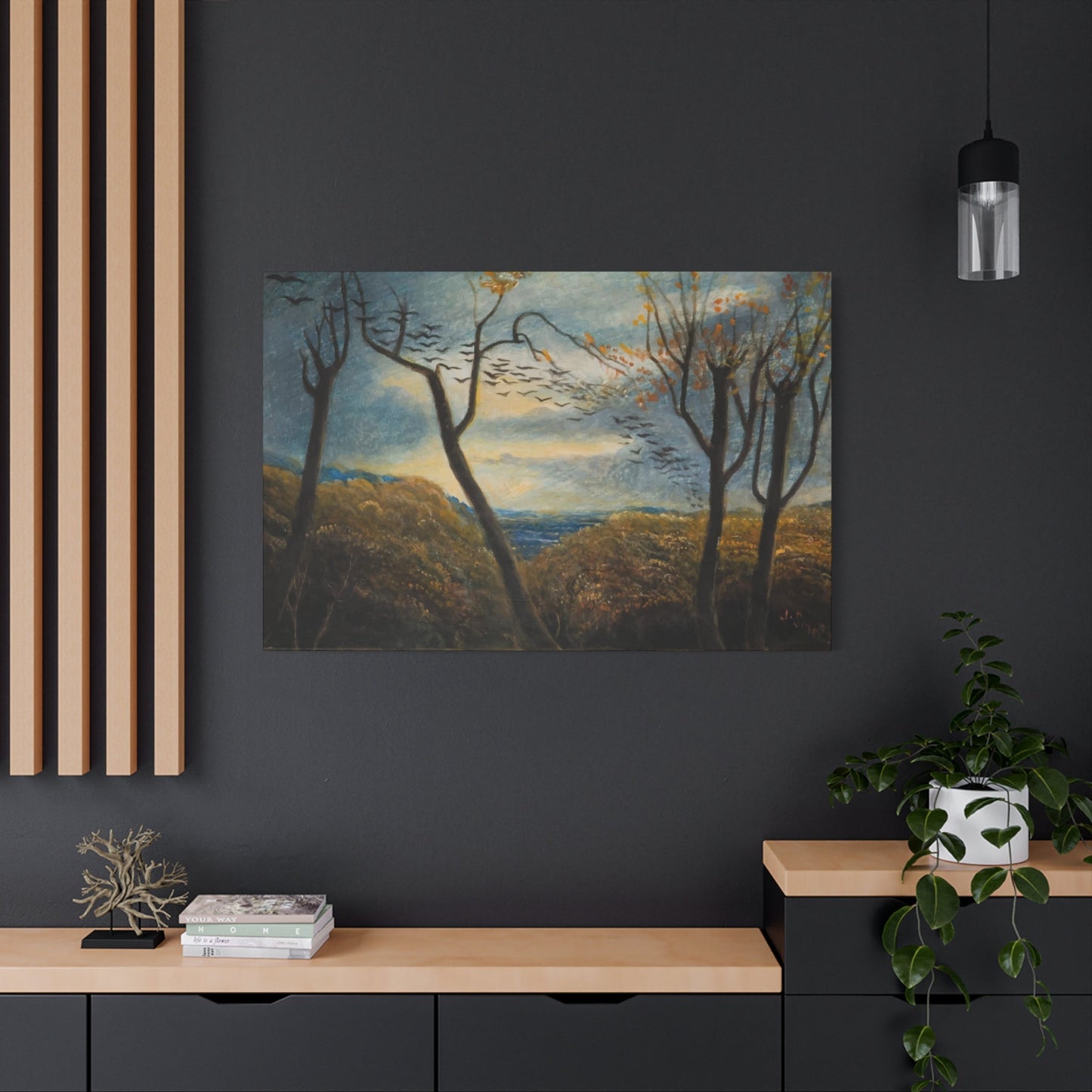Enrich Your Living Space with Masterful Landscape Painting Wall Art
Natural scenery artwork has become an increasingly popular choice for homeowners seeking to bring the tranquility and beauty of the outdoors into their living environments. Landscape wall art offers a unique opportunity to transform any room into a serene sanctuary that reflects the majesty of nature while complementing your personal aesthetic preferences. Whether you prefer rolling hills, majestic mountains, serene lakes, or vibrant sunsets, the right landscape artwork can create an atmosphere of calm and sophistication that enhances your daily living experience.
The appeal of landscape wall art extends beyond mere decoration, serving as a window to the natural world that can evoke powerful emotions and memories. These artistic representations of nature's beauty have the remarkable ability to transport viewers to peaceful locations, reduce stress levels, and create a sense of connection with the environment. From traditional oil paintings depicting pastoral scenes to contemporary interpretations of urban landscapes, this versatile art form offers endless possibilities for personalizing your home environment.
Modern homeowners are increasingly recognizing the psychological benefits of incorporating natural elements into their living environments, and landscape wall art provides an accessible way to achieve this connection without the need for extensive renovations or lifestyle changes. The strategic placement of carefully selected landscape pieces can create focal points, establish mood, and even influence the perceived size and brightness of a room. As we explore the various aspects of landscape wall art, you'll discover how these beautiful pieces can transform your home into a more harmonious and visually appealing environment.
Creative DIY Natural Scenery Painting Projects for Your Home
Creating your own landscape paintings can be an incredibly rewarding experience that allows you to personalize your wall art while developing artistic skills. DIY landscape painting projects offer the perfect opportunity to capture specific locations that hold personal significance, whether it's a favorite vacation spot, childhood memory, or simply a beautiful view from your window. The process of painting landscapes can be therapeutic and meditative, providing a creative outlet that reduces stress while producing beautiful artwork for your home.
When embarking on DIY landscape painting projects, begin with simple compositions that focus on basic elements such as horizons, simple tree shapes, and basic color relationships. Watercolor techniques are particularly forgiving for beginners, allowing for soft, ethereal effects that naturally complement landscape subjects. Acrylic paints offer versatility and quick drying times, making them ideal for layering techniques that create depth and texture in your natural scenery artwork.
Consider starting with small canvases or watercolor paper to build confidence before attempting larger works. Study photographs of landscapes that inspire you, paying attention to how light affects colors throughout the day and across different seasons. Practice mixing colors to achieve the subtle variations found in natural settings, from the warm oranges and pinks of sunrise to the cool blues and purples of twilight.
Essential supplies for DIY landscape painting include a variety of brush sizes, from wide flat brushes for broad washes of color to fine detail brushes for adding texture and highlights. A palette knife can be invaluable for mixing colors and creating interesting textural effects in your paintings. Quality paints in earth tones, blues, and greens will provide a solid foundation for most landscape compositions.
Experiment with different techniques such as wet-on-wet blending for soft cloud effects, dry brushing for textural elements like bark or grass, and glazing to create atmospheric depth. Online tutorials and instructional videos can provide valuable guidance on specific techniques and approaches to landscape painting. Consider joining local art groups or taking classes to receive feedback and learn from more experienced artists.
The beauty of DIY landscape painting lies in the freedom to interpret natural scenes according to your personal vision and color preferences. Don't worry about creating photorealistic representations; instead, focus on capturing the mood and essence of the landscape that speaks to you. Abstract interpretations can be just as powerful and meaningful as detailed realistic works.
Document your painting process with photos to track your progress and identify areas for improvement in future projects. Keep a sketchbook dedicated to landscape studies, practicing composition and color studies that can serve as references for larger works. Remember that every artist develops their unique style over time, so embrace the journey of discovering your personal approach to landscape painting.
Selecting Perfect Natural Scenery Artwork for Your Home
Choosing the right landscape painting for your home requires careful consideration of multiple factors that extend beyond personal preference to include practical elements such as room size, lighting conditions, existing decor, and the emotional atmosphere you wish to create. The process begins with evaluating the specific characteristics of the room where the artwork will be displayed, including wall color, furniture style, and the overall aesthetic theme you're working to achieve.
Consider the scale relationship between your chosen landscape artwork and the surrounding furnishings. Large-scale landscape pieces can serve as dramatic focal points in spacious rooms with high ceilings, while smaller works may be more appropriate for intimate settings or areas where multiple pieces will be grouped together. The viewing distance is crucial; artwork that will be seen primarily from across a room can handle bolder colors and more dramatic contrasts than pieces viewed up close.
The subject matter of your landscape artwork should complement the room's function and the mood you want to establish. Serene lake scenes or gentle rolling hills work beautifully in bedrooms where tranquility is desired, while more dynamic landscapes with dramatic skies or rugged terrain might be better suited for living areas where you want to create energy and conversation.
Color harmony between your landscape artwork and existing decor elements is essential for creating a cohesive design scheme. Analyze the dominant colors in your room and look for landscape pieces that either complement these hues or provide strategic contrast. Warm-toned landscapes with golden sunlight and autumn colors work well in rooms with wooden furniture and earth-tone palettes, while cool-toned seascapes and mountain scenes complement contemporary decor with neutral or blue-green color schemes.
Lighting conditions significantly impact how landscape artwork appears in your home. Natural daylight reveals colors most accurately, but consider how the piece will look under your artificial lighting systems as well. Paintings with lighter backgrounds and brighter colors will appear more vibrant in rooms with limited natural light, while darker, more moody landscapes can create dramatic effects in well-lit areas.
The artistic style and technique of the landscape painting should align with your home's overall aesthetic direction. Traditional oil paintings with realistic details complement classic and formal decor styles, while loose, impressionistic works suit more casual and contemporary environments. Abstract landscape interpretations can bridge the gap between traditional and modern design elements.
Consider the longevity of your choice by selecting landscape artwork that reflects timeless natural beauty rather than trendy artistic techniques that may lose appeal over time. Quality artwork represents an investment in your home's aesthetic value, so prioritize pieces that demonstrate skilled craftsmanship and use of archival materials that will maintain their beauty for years to come.
Take time to live with potential choices by using temporary hanging methods or visualization tools that allow you to see how different landscape options look in your actual environment throughout different times of day and lighting conditions.
Natural Scenery Artwork Perfect for Social Gathering Areas
Living rooms serve as the heart of the home, where families gather and guests are entertained, making them ideal locations for impactful landscape wall art that creates conversation and establishes the room's aesthetic tone. The selection of landscape artwork for these central gathering areas requires balancing personal taste with broader appeal, ensuring that chosen pieces contribute to a welcoming atmosphere that reflects your personality while remaining accessible to diverse audiences.
Large-scale landscape paintings work exceptionally well in living room settings, where they can serve as commanding focal points that draw attention and anchor seating arrangements. Consider panoramic landscape compositions that span multiple panels or single large canvases that capture sweeping vistas, dramatic coastlines, or expansive mountain ranges. These substantial works have the visual weight necessary to balance large furniture pieces and high ceilings commonly found in living areas.
The viewing angles available in living rooms allow for more complex and detailed landscape compositions than might be appropriate in hallways or bedrooms where viewing time is limited. Guests and family members will have opportunities to examine your landscape artwork from multiple positions and distances, making pieces with layered details and subtle color variations particularly rewarding choices.
Color coordination becomes especially important in living rooms where landscape artwork must harmonize with diverse furniture pieces, textiles, and decorative accessories. Neutral-toned landscapes with subtle color accents provide flexibility for seasonal decor changes and furniture rearrangements, while bold, colorful landscape pieces can serve as the foundation for the entire room's color scheme.
Consider the emotional impact you want your landscape artwork to have on the living room atmosphere. Peaceful pastoral scenes with gentle rolling hills and meandering streams create a calming environment perfect for relaxation and quiet conversation. More dramatic landscape subjects, such as stormy seascapes or rugged mountain peaks, can energize the room and stimulate engaging discussions among guests.
The lighting in living rooms typically varies throughout the day, from natural daylight streaming through windows to intimate evening illumination from lamps and overhead fixtures. Choose landscape paintings with sufficient contrast and color saturation to remain visually engaging under different lighting conditions. Avoid pieces that rely heavily on subtle tonal variations that may disappear under artificial lighting.
Multiple seating areas within larger living rooms present opportunities for creating themed landscape displays that guide traffic flow and define separate functional zones. A series of related landscape pieces can unify the entire room while allowing for distinct viewing experiences from different seating positions. Consider seasonal landscape themes that can be rotated throughout the year to maintain visual interest and reflect changing outdoor conditions.
The durability of landscape artwork becomes particularly important in high-traffic living areas where pieces may be exposed to increased handling, dust, and varying humidity levels from heating and cooling systems. Invest in properly framed and protected artwork that can withstand the environmental challenges of active living areas while maintaining its visual impact over time.
Comparing Abstract and Realistic Natural Scenery Art Styles
The choice between abstract and realistic landscape artwork represents one of the most fundamental decisions in selecting natural scenery art for your home, with each approach offering distinct advantages and aesthetic experiences that cater to different personal preferences and design philosophies. Understanding the characteristics, benefits, and applications of both styles will help you make informed decisions that align with your home's aesthetic direction and your personal artistic sensibilities.
Realistic landscape artwork aims to faithfully represent natural scenes with attention to accurate proportions, colors, and details that mirror what the eye might observe in actual outdoor environments. This traditional approach appeals to viewers who appreciate technical skill and craftsmanship, offering the comfort of familiar imagery that can evoke specific memories or emotions associated with particular locations. Realistic landscape paintings often serve as windows to the natural world, allowing viewers to mentally escape to peaceful or inspiring outdoor settings.
The advantages of realistic landscape artwork include its universal appeal and ability to complement traditional home decor styles without appearing out of place or overly challenging to interpret. These pieces often feature recognizable elements such as trees, mountains, water bodies, and skies that immediately communicate their subject matter to viewers of all ages and artistic backgrounds. Realistic landscape paintings can serve educational purposes, helping children and adults develop appreciation for natural environments and geographical features.
Abstract landscape artwork interprets natural scenes through simplified forms, bold colors, and emotional expression rather than literal representation. These pieces focus on capturing the essence, mood, or emotional impact of natural environments rather than their exact appearance. Abstract landscape art often employs exaggerated colors, geometric shapes, and unconventional compositions to convey the artist's personal response to natural beauty and environmental experiences.
The benefits of abstract landscape artwork include its ability to complement contemporary decor styles and its flexibility in coordinating with diverse color schemes and furniture arrangements. Abstract pieces can serve as sophisticated design elements that add visual interest without overwhelming other room components. These works often encourage personal interpretation, allowing viewers to project their own experiences and emotions onto the artwork, creating deeper personal connections over time.
Contemporary homes often benefit from the clean lines and bold color relationships found in abstract landscape art, which can bridge the gap between natural inspiration and modern aesthetic sensibilities. Abstract landscape pieces can incorporate unexpected color combinations and compositional approaches that energize traditional decorating schemes and prevent rooms from appearing predictable or overly conventional.
The decision between abstract and realistic landscape artwork often depends on the specific room environment and intended atmosphere. Formal dining rooms and traditional living areas may favor realistic landscape paintings that complement classic furniture styles and architectural details. Modern kitchens, contemporary bedrooms, and minimalist living areas often showcase abstract landscape interpretations that align with clean, uncluttered design principles.
Consider your long-term satisfaction with either approach, as realistic landscape artwork may provide more enduring appeal for viewers who prefer traditional artistic approaches, while abstract pieces might maintain interest longer for those who enjoy discovering new interpretations and meanings in their artwork over time. The investment value of landscape artwork can vary between abstract and realistic approaches depending on the artist's reputation and the current art market trends.
Professional Framing Techniques for Natural Scenery Artwork
Proper framing represents a critical component in displaying landscape artwork that not only protects your investment but also enhances the visual impact and integration of the piece within your home environment. Professional framing techniques for landscape paintings require consideration of multiple factors including the artwork's medium, size, style, and the intended display location, all working together to create a presentation that complements both the artwork and your home's aesthetic.
The selection of appropriate framing materials begins with understanding the specific needs of your landscape artwork's medium and substrate. Oil paintings on canvas typically require deeper frames or shadow boxes that accommodate the thickness of stretched canvas, while watercolor landscapes on paper benefit from matting systems that prevent direct contact between the artwork and glazing materials. Acrylic landscape paintings may require different considerations depending on their support material and texture.
Matting choices significantly impact the visual presentation of landscape artwork, particularly for works on paper or smaller canvas pieces. Neutral-colored mats in cream, white, or light gray tones provide classic presentations that don't compete with the landscape imagery for attention. Consider double matting techniques that incorporate subtle color accents drawn from the landscape painting's palette to create sophisticated presentations that enhance the artwork's color relationships.
The width of matting around landscape artwork affects both the visual impact and the perceived importance of the piece. Wider mats tend to elevate the status of artwork and create more formal presentations, while narrower mats offer more contemporary, streamlined appearances. Landscape paintings with busy or complex compositions may benefit from wider mats that provide visual breathing room, while simpler compositions can handle narrower matting without appearing cramped.
Frame selection should complement both the landscape artwork and the room's existing decor elements without overwhelming either component. Traditional landscape paintings often pair well with classic wooden frames in warm tones that echo natural materials, while contemporary landscape interpretations may benefit from sleek metal frames or minimalist designs that don't compete with the artwork for attention.
Conservation framing techniques become particularly important for valuable or irreplaceable landscape artwork that you want to preserve for future generations. Acid-free materials, UV-protective glazing, and proper spacing between artwork and glazing help prevent deterioration from environmental factors. Museum-quality framing materials represent worthwhile investments for significant landscape pieces or works with sentimental value.
The scale relationship between frame width and artwork dimensions requires careful consideration to achieve balanced presentations. Larger landscape paintings can accommodate wider, more substantial frames that provide appropriate visual weight, while smaller pieces may appear overwhelmed by frames that are too heavy or ornate. Consider the viewing distance when selecting frame proportions, as pieces viewed from farther away can handle more substantial framing than those examined up close.
Glazing options for landscape artwork include regular glass, non-reflective glass, and acrylic alternatives, each offering different benefits and considerations. Non-reflective glazing reduces glare problems that can interfere with artwork viewing, particularly important for landscape pieces displayed opposite windows or under bright artificial lighting. UV-protective glazing helps prevent fading in landscape paintings that contain light-sensitive pigments or are displayed in areas with significant natural light exposure.
Professional installation techniques ensure that framed landscape artwork hangs securely and at appropriate heights for optimal viewing. Consider the sight lines from primary seating areas and standing positions when determining placement height. Proper hanging hardware rated for the weight of framed landscape pieces prevents accidents and wall damage while maintaining secure positioning over time.
Evolution and Heritage of Natural Scenery Wall Art
The historical development of landscape wall art reflects humanity's evolving relationship with the natural environment and changing artistic traditions that have shaped how we perceive and represent outdoor beauty. Understanding this rich heritage provides valuable context for contemporary landscape artwork choices and helps homeowners appreciate the cultural significance of natural scenery art in residential settings.
Ancient civilizations first incorporated landscape elements into wall decorations as backgrounds for religious or mythological scenes rather than subjects worthy of independent artistic attention. Egyptian tomb paintings included stylized natural elements that served symbolic purposes, while Roman frescoes featured garden scenes that created illusions of extended outdoor environments within enclosed architectural settings. These early applications established landscape imagery as a means of connecting indoor environments with the natural world.
The Renaissance period marked a significant shift in landscape art appreciation, with artists like Leonardo da Vinci and Albrecht Dürer elevating natural scenery to unprecedented levels of detailed observation and artistic sophistication. Landscape elements began appearing as carefully studied components of larger compositions, demonstrating scientific accuracy and artistic skill that reflected the period's emphasis on empirical observation and natural philosophy.
The Dutch Golden Age of the 17th century established landscape painting as an independent artistic genre worthy of serious attention and patronage. Artists like Jacob van Ruisdael and Meindert Hobbema created landscape masterpieces that captured the subtle beauty of the Netherlands' flat countryside, cloudy skies, and maritime environments. These works demonstrated that ordinary natural scenery could provide subjects for profound artistic expression and emotional communication.
The Romantic movement of the late 18th and early 19th centuries revolutionized landscape art by emphasizing emotional response and sublime natural experiences. Artists like Caspar David Friedrich and J.M.W. Turner created landscape paintings that explored themes of human insignificance in the face of natural forces, spiritual connection with wilderness environments, and the emotional power of dramatic natural phenomena. This period established landscape art as a vehicle for philosophical and emotional expression.
Impressionism transformed landscape painting in the late 19th century by emphasizing the effects of light and atmosphere over precise detail and formal composition. Artists like Claude Monet and Camille Pissarro painted landscape subjects outdoors, capturing fleeting effects of sunlight, weather, and seasonal changes that had previously been considered unworthy of artistic attention. This movement democratized landscape subject matter and established plein air painting techniques that continue influencing contemporary artists.
The 20th century brought diverse approaches to landscape art, from the bold colors and simplified forms of Fauvism to the geometric interpretations of Cubism and the emotional expressions of Abstract Expressionism. These movements expanded the definition of landscape art beyond literal representation, encouraging artists to explore personal responses to natural environments through innovative techniques and unconventional materials.
Contemporary landscape art continues evolving through digital technologies, mixed media approaches, and environmental awareness that reflects current concerns about climate change and habitat preservation. Modern landscape artists work in diverse media from traditional oil paintings to video installations, creating works that address contemporary environmental issues while maintaining connections to historical landscape art traditions.
The collecting and display of landscape artwork in private homes has evolved from the exclusive privilege of wealthy patrons to an accessible form of artistic appreciation available to diverse socioeconomic groups. Mass production techniques, print technologies, and online art markets have democratized access to landscape imagery while maintaining appreciation for original works and traditional craftsmanship.
Understanding the historical context of landscape wall art enriches the experience of selecting and displaying natural scenery artwork in contemporary homes, connecting personal aesthetic choices with broader cultural traditions and artistic movements that have shaped human responses to natural beauty throughout history.
Creating Visual Depth Through Strategic Natural Scenery Placement
The strategic use of landscape paintings to create visual depth represents one of the most effective techniques for enhancing the perceived dimensions and spatial qualities of residential environments. Understanding how landscape imagery interacts with architectural elements, lighting conditions, and existing furnishings allows homeowners to maximize the spatial impact of their natural scenery artwork while creating more dynamic and visually engaging living areas.
The fundamental principle of using landscape art to create depth relies on the natural tendency of outdoor scenes to suggest infinite distances beyond the confines of interior walls. Landscape paintings featuring receding elements such as winding paths, mountain ranges that fade into atmospheric perspective, or bodies of water that extend to distant horizons can visually expand room dimensions by creating the illusion of extended viewing distances that transcend physical boundaries.
Placement height significantly affects how landscape artwork contributes to spatial perception within rooms. Positioning landscape pieces at eye level when seated creates intimate viewing experiences that invite contemplation and emotional connection. Hanging artwork slightly higher encourages viewers to lift their gaze, which can make ceilings appear higher and rooms feel more spacious. Very large landscape paintings that extend from floor to ceiling can create dramatic vertical emphasis that expands perceived room height.
The scale relationship between landscape artwork and surrounding wall areas influences spatial perception in important ways. Oversized landscape paintings can overwhelm small rooms, making them feel cramped and claustrophobic, while undersized pieces may appear lost in large wall expanses, failing to provide the visual anchor necessary for spatial definition. Properly scaled landscape art should occupy approximately one-half to two-thirds of the available wall area for optimal spatial impact.
Color temperatures within landscape paintings affect spatial perception through the natural tendency of warm colors to advance visually while cool colors recede. Landscape pieces dominated by warm earth tones, golden sunlight, or autumn foliage appear to bring painted elements forward into the room environment. Cool-toned landscapes featuring blue skies, snow-covered mountains, or misty morning scenes create recession effects that seem to push the wall surface away from viewers.
Atmospheric perspective techniques in landscape paintings enhance depth perception by mimicking the natural optical effects that occur when viewing distant objects through layers of atmospheric particles. Landscape artwork that demonstrates clear atmospheric perspective, with sharp foreground details gradually giving way to softer, lighter, and cooler background elements, creates convincing illusions of three-dimensional depth that can significantly expand perceived room dimensions.
Multiple landscape pieces arranged in thoughtful relationships can create complex spatial effects that guide eye movement throughout rooms while establishing rhythmic patterns that enhance overall design cohesion. Sequential landscape paintings that progress from detailed foreground scenes to distant vistas can create narrative depth that draws viewers through visual journeys that extend far beyond physical room boundaries.
Lighting design plays a crucial role in maximizing the depth-creating potential of landscape artwork. Properly illuminated landscape paintings appear to glow with internal light that separates them from surrounding wall surfaces, creating floating effects that enhance spatial perception. Accent lighting that grazes landscape painting surfaces can emphasize texture and create shadow patterns that add dimensional interest to otherwise flat wall areas.
The positioning of landscape artwork in relationship to architectural features such as doorways, windows, and built-in elements affects spatial flow and depth perception throughout connected areas. Landscape paintings positioned to create sight lines between rooms can establish visual continuity that makes separate areas feel part of larger, more expansive environments. Strategic placement near windows can blur the boundaries between indoor and outdoor environments, extending perceived living areas into landscape views.
Natural Scenery Art in Contemporary Home Environments
Contemporary home design principles emphasize clean lines, functional efficiency, and sophisticated simplicity, creating unique opportunities and challenges for incorporating landscape wall art that complements modern aesthetic sensibilities while providing the natural beauty and emotional warmth that make houses feel like homes. The integration of natural scenery artwork into contemporary environments requires understanding how traditional landscape imagery can enhance rather than conflict with minimalist design philosophies.
Modern architecture's emphasis on large windows, open floor plans, and neutral color palettes creates ideal backdrops for carefully selected landscape artwork that can serve as sophisticated focal points without overwhelming the clean aesthetic lines that define contemporary style. The key lies in choosing landscape pieces that embrace simplicity while maintaining the emotional and visual impact that makes natural scenery art so appealing to homeowners seeking connection with outdoor environments.
Minimalist landscape interpretations work exceptionally well in contemporary settings, with artists creating sophisticated works that distill natural scenery to essential elements through simplified forms, limited color palettes, and strategic use of negative areas. These pieces maintain the calming and inspiring qualities associated with landscape art while conforming to the uncluttered aesthetic preferences of modern design sensibilities.
The scale considerations in contemporary homes often favor larger landscape artworks that can hold their own against expansive wall areas and high ceilings without appearing insignificant or lost in the architectural drama of modern environments. Oversized landscape canvases or multi-panel installations can create impressive statements that satisfy both the visual impact requirements of contemporary design and the emotional appeal of natural scenery imagery.
Color coordination becomes particularly important when incorporating landscape art into contemporary environments where neutral backgrounds and strategic color accents define the overall aesthetic approach. Landscape paintings with predominantly neutral tones punctuated by carefully controlled color accents can enhance modern color schemes without introducing competing elements that disrupt design cohesion.
The clean geometric lines prevalent in contemporary architecture provide interesting contrast opportunities for organic landscape forms, creating dynamic visual tension that energizes modern environments without sacrificing their sophisticated appeal. The juxtaposition of curved natural forms against angular architectural elements can create compelling focal points that demonstrate sophisticated design sensibilities.
Contemporary lighting systems, including track lighting, recessed fixtures, and LED accent lights, offer precise control over how landscape artwork appears within modern environments. These systems can be programmed to highlight landscape paintings at specific times of day or adjusted to complement changing natural light conditions, maximizing the visual impact of natural scenery art throughout different daily and seasonal cycles.
The open floor plans characteristic of contemporary homes create opportunities for landscape artwork to serve multiple functional areas simultaneously, with large-scale pieces visible from kitchens, living areas, and dining zones. This visibility requires landscape selections that maintain appropriate visual interest from multiple viewing angles and distances while contributing to the overall design coherence of connected areas.
Technology integration in contemporary homes opens possibilities for digital landscape displays and interactive installations that can change with seasons, weather conditions, or personal preferences. While maintaining appreciation for traditional landscape paintings, modern homeowners can explore innovative ways to incorporate natural scenery imagery through smart display systems and programmable art installations.
The sustainability consciousness that often accompanies contemporary lifestyle choices creates opportunities for landscape artwork that addresses environmental themes or demonstrates eco-friendly production methods. Artists working with recycled materials, sustainable pigments, or environmental subject matter can appeal to contemporary homeowners who want their art choices to reflect their values and lifestyle commitments.
Contemporary furniture selections, with their emphasis on functional beauty and high-quality materials, provide excellent foundations for landscape artwork displays that demonstrate curatorial sophistication and artistic appreciation. The investment in quality landscape pieces reflects the same commitment to lasting beauty and functional excellence that characterizes the best contemporary home design.
Harmonizing Natural Scenery with Diverse Art Collections
Creating cohesive art displays that successfully combine landscape paintings with other artistic genres requires understanding the visual relationships, thematic connections, and compositional principles that allow diverse artwork to work together harmoniously rather than competing for attention or creating chaotic visual experiences. The successful integration of landscape art with portraits, abstract works, photographs, and other artistic expressions can create sophisticated collections that demonstrate curatorial expertise and personal aesthetic development.
The foundation of successful art combination lies in identifying common elements that create visual bridges between different artistic styles and subject matters. Color relationships provide the most accessible connection point, with landscape paintings serving as foundations for broader color schemes that can accommodate works in various media and styles. A landscape painting's palette can establish dominant and accent colors that appear in complementary ways throughout other artworks in the same display area.
Compositional rhythms offer another effective approach to harmonizing diverse artwork, with the horizontal emphasis common in landscape paintings providing balance for the vertical orientations often found in portraits or abstract works. The visual weight distribution across different pieces can create pleasing arrangements that guide eye movement through collections while maintaining individual artwork integrity and impact.
Thematic connections between landscape artwork and other artistic genres can create meaningful dialogues that enhance the intellectual and emotional appeal of art collections. Historical photographs can complement landscape paintings by providing documentary context for depicted locations or time periods. Abstract works that draw inspiration from natural forms or environmental experiences can create sophisticated conversations with more literal landscape representations.
The framing and presentation consistency across diverse artwork helps create visual unity that allows different artistic styles to coexist successfully. Coordinated frame selections, consistent matting approaches, and unified hanging systems can provide the structural foundation necessary for eclectic art collections to appear thoughtfully curated rather than randomly assembled.
Scale relationships between landscape paintings and other artwork require careful consideration to achieve balanced displays that give appropriate emphasis to each piece without allowing any single work to dominate or disappear within the collection. Varying sizes can create dynamic arrangements that maintain visual interest while respecting the individual characteristics and intended impact of each artistic work.
The lighting considerations for mixed art collections become more complex than those for single-medium displays, as different artistic techniques and materials may have varying requirements for optimal presentation. Landscape paintings with subtle color gradations may require different illumination than high-contrast abstract works or detailed portrait studies, necessitating flexible lighting systems that can be adjusted for optimal viewing of different collection components.
Sequential viewing experiences through collections that include landscape artwork can create narrative journeys that enhance the overall impact of individual pieces while building toward greater artistic and emotional effects. The positioning of landscape paintings within these sequences can provide rest points, transition elements, or climactic moments that demonstrate sophisticated understanding of curatorial principles.
The cultural and historical contexts of different artwork within collections can create rich interpretive opportunities that enhance appreciation for individual pieces while building broader understanding of artistic movements, cultural developments, and personal aesthetic evolution. Landscape paintings can serve as anchoring elements that provide stability and continuity within collections that span different time periods or artistic approaches.
Personal significance and emotional connections with individual artworks within collections can override purely aesthetic considerations, creating opportunities for landscape paintings to serve as emotional bridges that help integrate personally meaningful pieces that might not otherwise coordinate successfully. The universal appeal of natural beauty in landscape art can provide common ground that allows diverse personal artistic preferences to coexist harmoniously.
The evolution of art collections over time requires flexibility in display arrangements and integration strategies, with landscape paintings often serving as stable foundational elements that can accommodate new acquisitions and changing aesthetic preferences while maintaining overall collection coherence and visual appeal.
Professional Environment Natural Scenery Artwork Selection
The selection of landscape artwork for professional environments requires balancing aesthetic appeal with functional considerations that address the unique challenges and opportunities present in workplace settings. Office environments benefit from natural scenery art that enhances productivity, reduces stress, and creates welcoming atmospheres for both employees and clients while maintaining professional appropriateness and long-term visual appeal.
The psychological benefits of landscape artwork in professional settings have been well-documented through workplace satisfaction studies that demonstrate improved employee morale, reduced stress levels, and enhanced creativity when natural imagery is incorporated into office environments. Landscape paintings depicting serene natural scenes can provide visual respites from the intensity of work demands, offering brief mental escapes that help maintain emotional balance throughout demanding workdays.
Scale considerations in office environments often require larger landscape artworks that can maintain visual impact in settings with high ceilings, extensive wall areas, and viewing distances greater than those found in residential settings. Conference rooms, reception areas, and common areas can accommodate substantial landscape pieces that create impressive statements reflecting company values and aesthetic sophistication.
The durability requirements for office landscape artwork exceed those of residential applications due to factors including increased traffic, varying environmental conditions, and the need for longevity without frequent replacement or maintenance. High-quality materials, professional framing, and appropriate protective measures become essential investments in maintaining professional appearances over extended time periods.
Color coordination in professional environments must accommodate diverse personal preferences while maintaining neutrality that avoids potentially controversial or distracting visual elements. Landscape artwork with predominantly neutral tones and subtle color accents can enhance office environments without creating conflicts with existing decor or individual aesthetic preferences among staff and clients.
The lighting conditions in professional settings often rely heavily on artificial illumination systems that may vary significantly from natural lighting conditions. Landscape paintings selected for office environments should maintain visual appeal under fluorescent, LED, or other artificial lighting systems commonly found in commercial buildings while avoiding colors or techniques that appear significantly different under various lighting conditions.
Meeting rooms and conference areas benefit from landscape artwork that creates positive atmospheres for collaboration and decision-making without providing distracting visual elements that interfere with focus and attention during important business discussions. Subtle, calming landscape scenes can enhance the professional atmosphere while supporting productive interactions between colleagues and clients.
Reception areas present opportunities for more dramatic landscape artwork that creates positive first impressions for visitors while reflecting company personality and values. These prominent display areas can accommodate bold, impressive landscape pieces that demonstrate commitment to quality and aesthetic sophistication while providing conversation starters that facilitate comfortable client interactions.
The maintenance considerations for landscape artwork in professional settings include regular cleaning, protection from handling damage, and periodic assessment for signs of deterioration that could affect professional appearances. Establishing maintenance schedules and protective measures helps ensure that landscape investments continue providing positive visual impact throughout their intended lifespan.
Budget considerations for professional landscape artwork often involve balancing initial investment costs with long-term benefits including employee satisfaction, client impressions, and workplace atmosphere enhancement. Quality landscape pieces represent investments in workplace environment that can provide returns through improved productivity, employee retention, and positive business relationships.
The selection process for professional landscape artwork may involve committee decisions or stakeholder input that requires compromise and consensus-building around aesthetic preferences. Choosing landscape pieces with broad appeal and avoiding potentially controversial subjects or artistic approaches helps ensure successful implementation and long-term satisfaction among diverse workplace constituencies.
Seasonal Natural Scenery Art Rotation Strategies
Implementing seasonal rotation strategies for landscape wall art offers homeowners opportunities to maintain visual freshness, celebrate natural cycles, and adapt their living environments to changing moods and preferences throughout the year. This approach to displaying natural scenery artwork creates dynamic home environments that evolve with seasonal rhythms while maximizing the impact and longevity of art collections.
The practical foundation for seasonal landscape art rotation requires establishing storage systems that protect artwork during off-display periods while maintaining easy accessibility for periodic changes. Climate-controlled storage areas, protective wrapping materials, and organized cataloging systems help ensure that rotated landscape pieces remain in excellent condition and can be easily located when seasonal changes are desired.
Spring landscape artwork typically features themes of renewal, growth, and fresh beginnings with imagery including blooming flowers, bright green foliage, gentle rain showers, and awakening wildlife. These pieces can energize home environments after long winter months while celebrating the optimism and vitality associated with seasonal renewal. Light, bright colors and soft, fresh compositions create appropriate spring atmospheres that complement increased natural light and longer days.
Summer landscape selections often emphasize warmth, abundance, and outdoor activities with representations of lush vegetation, sunny skies, beach scenes, and mountain vistas that evoke vacation memories and leisure activities. Bold, saturated colors and high-energy compositions can reflect the season's vitality while creating inviting environments that celebrate outdoor living and relaxation opportunities.
Autumn landscape artwork celebrates harvest themes, color changes, and preparation for winter through imagery featuring changing foliage, golden light, harvest scenes, and migrating wildlife. Warm earth tones, rich oranges and reds, and compositions suggesting abundance and gratitude create cozy atmospheres that complement cooler weather and increased indoor activities.
Winter landscape pieces often focus on quiet beauty, contemplation, and stark natural drama through snow scenes, bare trees, cloudy skies, and wildlife adaptation themes. Cool color palettes, simplified compositions, and emphasis on texture and contrast can create sophisticated environments that celebrate winter's unique aesthetic qualities while providing comfort during cold, dark months.
The timing of seasonal landscape art changes can coincide with natural seasonal transitions, holiday periods, or personal preferences for environmental change. Some homeowners prefer gradual transitions that begin before official seasonal changes, while others wait for dramatic weather changes or specific calendar dates. Establishing consistent timing helps create anticipated pleasures associated with seasonal decorating rituals.
Storage and rotation logistics require planning systems that account for artwork sizes, framing requirements, and handling considerations that protect pieces during transitions. Dedicated storage areas, proper wrapping materials, and assistance for handling large pieces help ensure successful rotations without damage to valuable landscape artwork or home furnishings.
The integration of seasonal landscape rotations with other decorating changes can create comprehensive environmental transformations that extend beyond artwork to include textiles, accessories, and lighting adjustments. Coordinating landscape art changes with seasonal flower arrangements, throw pillow updates, and lighting modifications can create dramatic seasonal environment shifts throughout the home.
Budget considerations for seasonal landscape collections may require gradual acquisition strategies that build comprehensive seasonal selections over time rather than requiring immediate investment in complete seasonal sets. Starting with favorite seasons or most dramatic changes can provide immediate satisfaction while allowing for gradual expansion of seasonal options.
The emotional and psychological benefits of seasonal landscape art rotation include maintaining visual interest, celebrating natural cycles, and creating positive associations with seasonal changes that might otherwise be viewed negatively. Regular environmental changes can prevent aesthetic fatigue while providing opportunities for rediscovering previously displayed pieces with fresh appreciation.
Conclusion:
Masterful landscape painting wall art offers a timeless way to bring the breathtaking beauty of nature directly into your home. By showcasing stunning natural scenery—from rolling hills and serene lakes to majestic mountains and tranquil forests—these artworks create an immersive experience that transcends ordinary décor. They invite you to reconnect with the outdoors, providing a sense of calm, inspiration, and rejuvenation within your personal living space.
What makes landscape painting so enduringly popular is its ability to capture the ever-changing moods and textures of nature. Through skilled brushwork, vibrant color palettes, and thoughtful compositions, artists convey the intricate details and vast expanses of the natural world. Whether it’s a softly lit sunrise, a dramatic stormy sky, or the golden hues of autumn, each piece tells a unique story that resonates emotionally and visually.
Incorporating masterful landscape art into your home enhances not only the aesthetics but also the ambiance. These paintings bring a sense of openness and tranquility, making rooms feel larger and more inviting. They complement a wide variety of interior styles, from rustic cabins and traditional homes to sleek modern apartments. The natural themes harmonize beautifully with materials like wood, stone, and linen, fostering a warm and grounded atmosphere.
Beyond their visual appeal, landscape paintings offer psychological benefits as well. Studies show that exposure to images of nature can reduce stress, improve mood, and boost creativity. By surrounding yourself with evocative natural scenery, you cultivate a peaceful retreat that promotes well-being and mindfulness—qualities especially valuable in today’s fast-paced, urban lifestyles.
Moreover, masterful landscape wall art can serve as a meaningful centerpiece or a subtle accent depending on your preference. Large-scale canvases can transform an empty wall into a breathtaking vista, while smaller paintings add texture and interest to gallery walls or cozy reading corners. The flexibility in size and style makes it easy to find pieces that perfectly suit your space and taste.
In conclusion, masterful landscape painting wall art is more than just decoration—it’s a celebration of nature’s enduring beauty and a gateway to serenity within your home. By inviting these stunning scenes into your living environment, you enrich your daily life with color, emotion, and a profound connection to the world outside.

